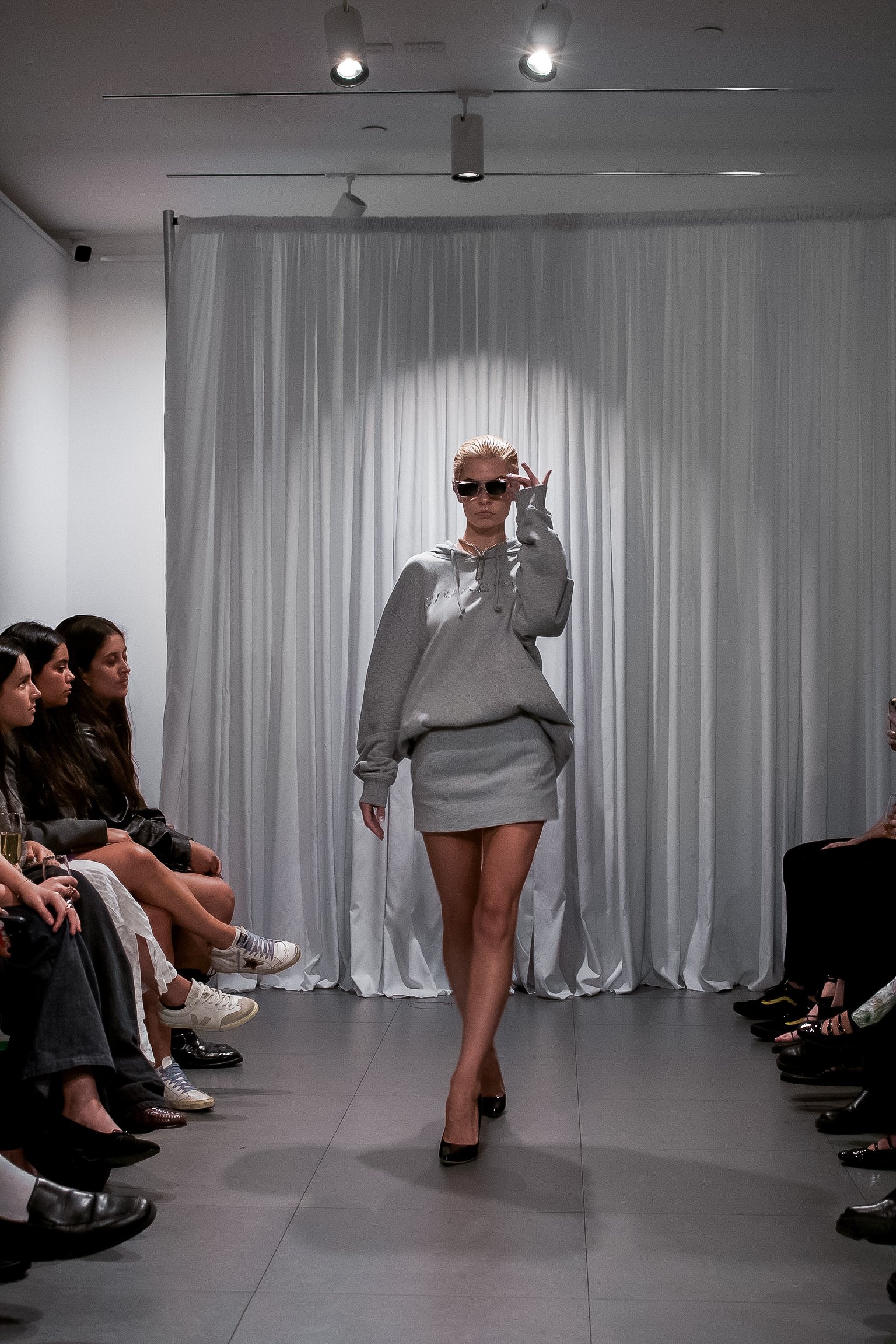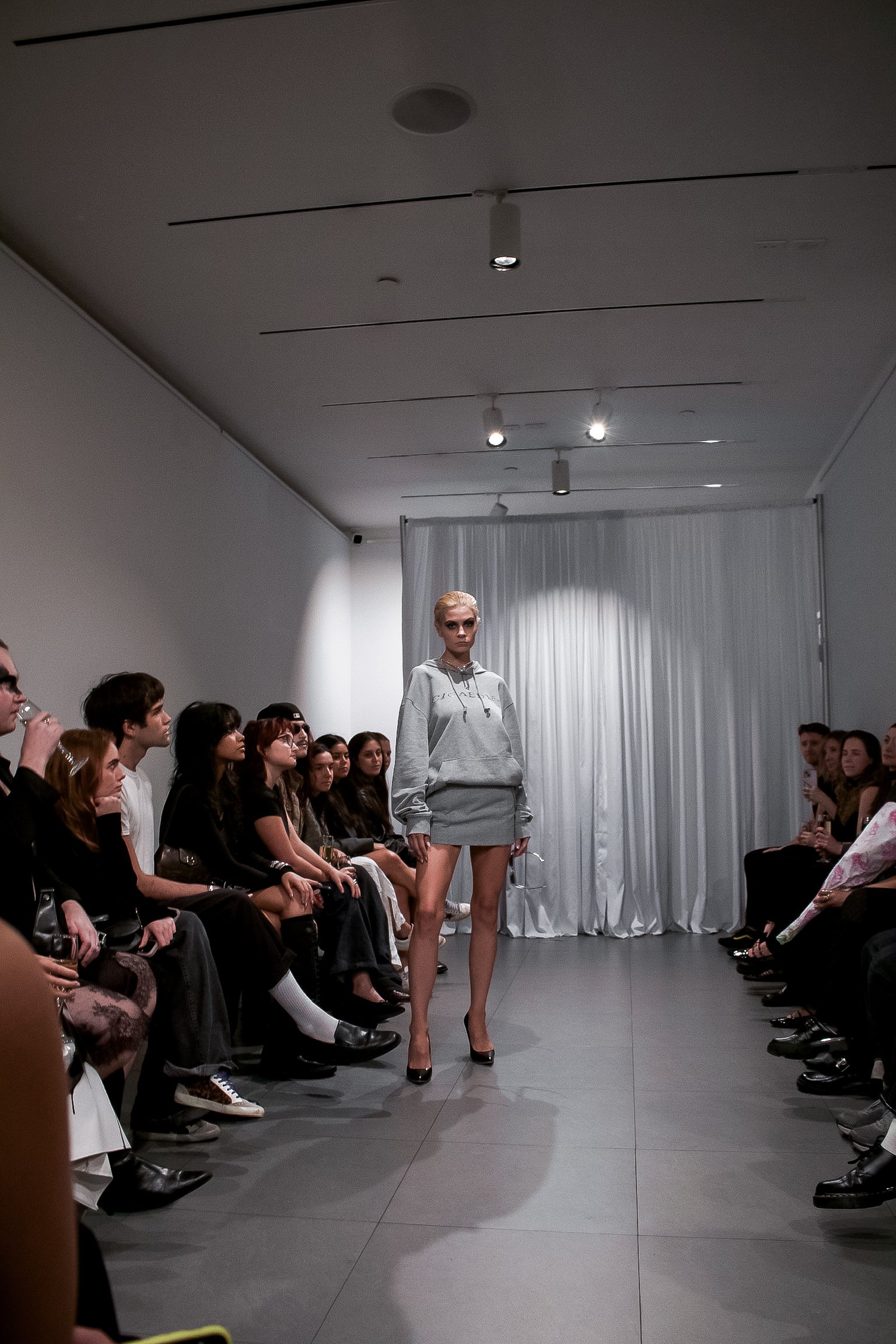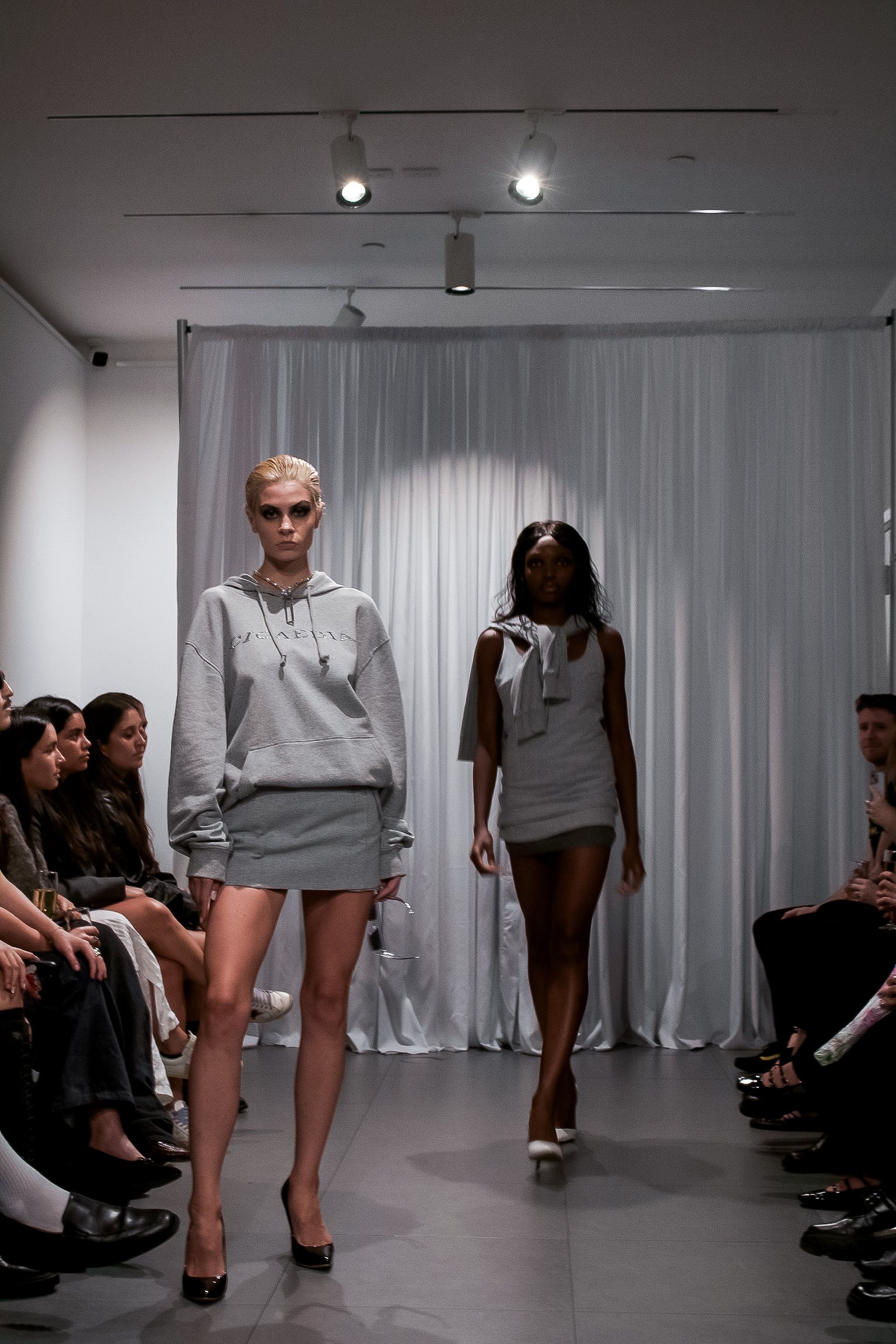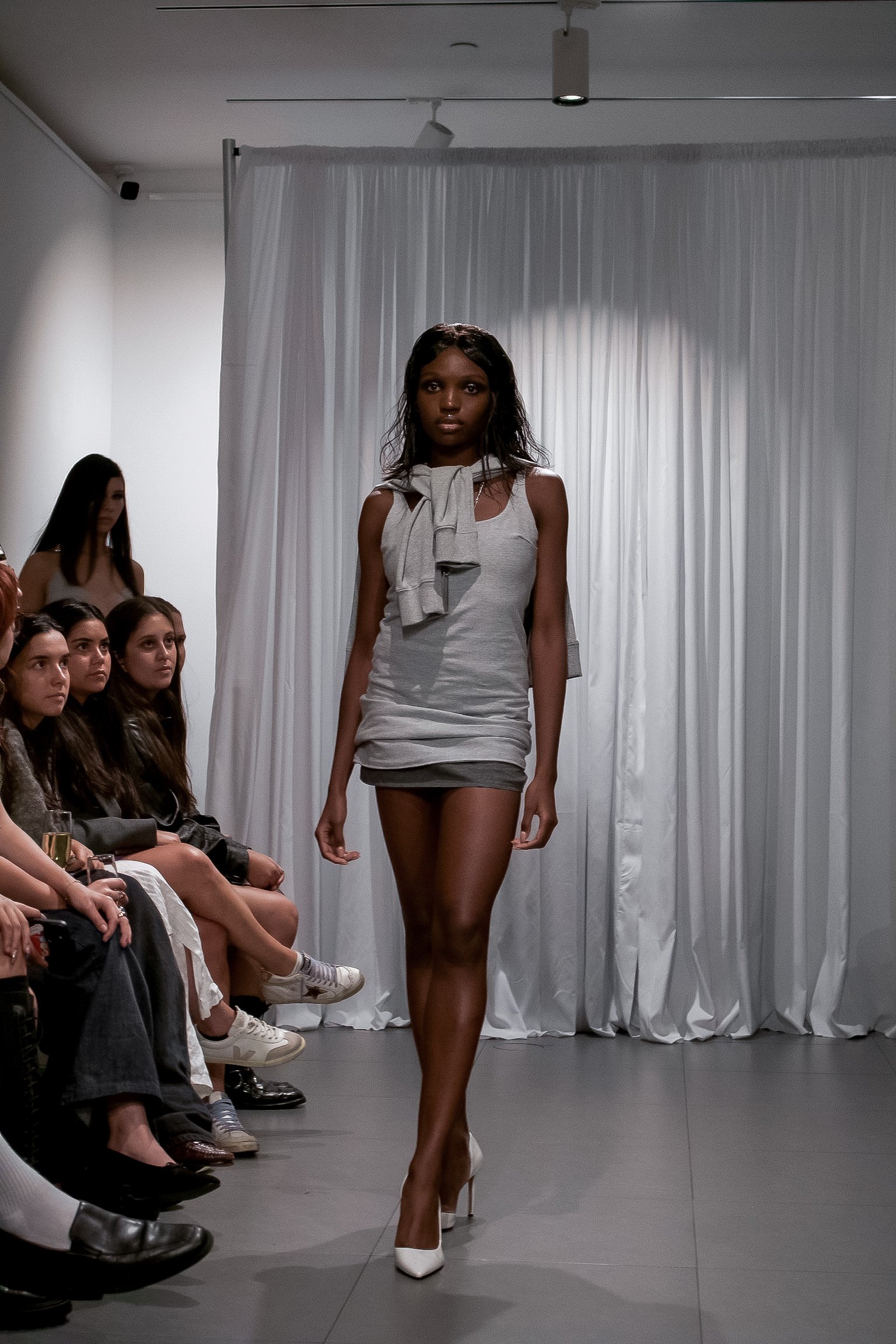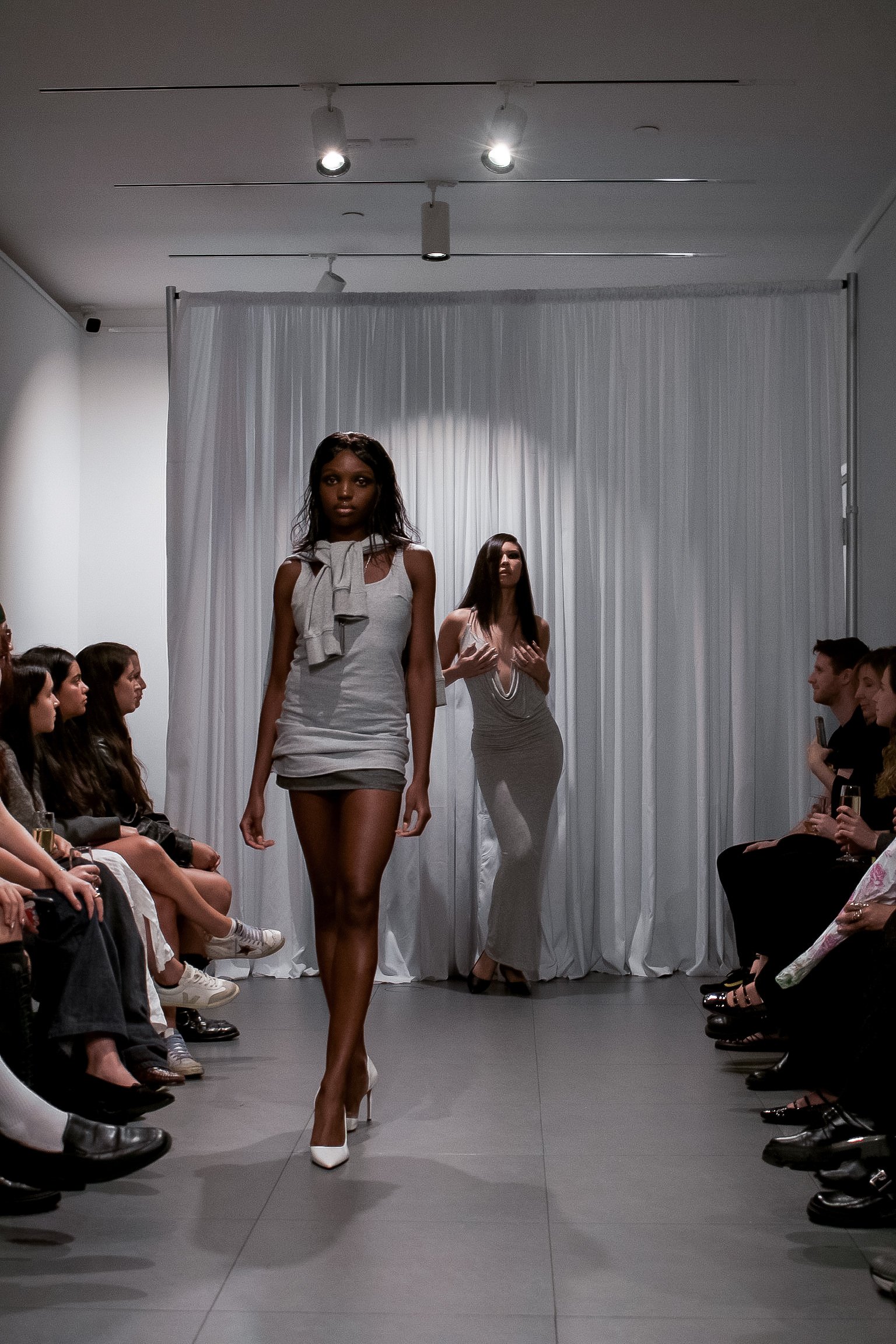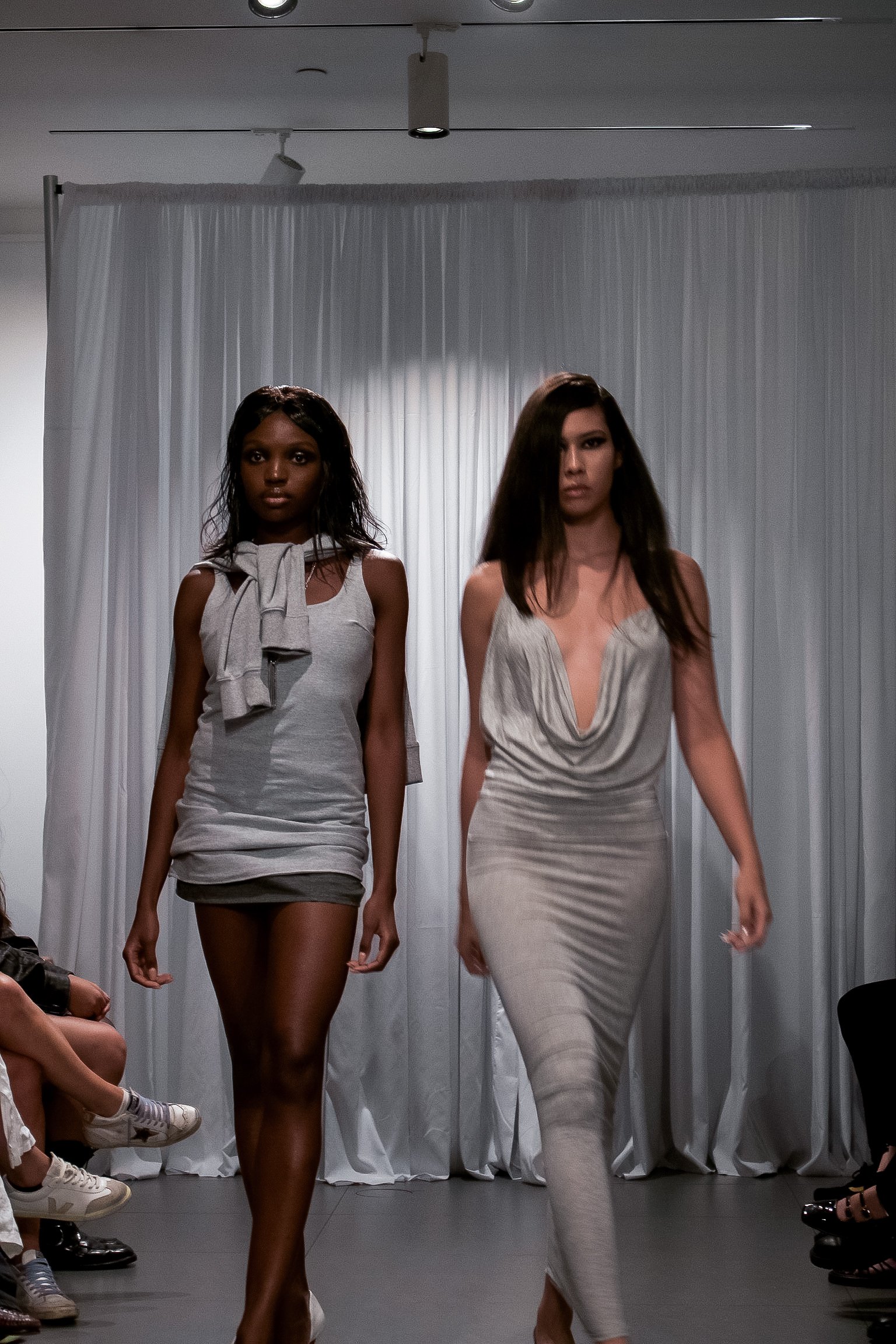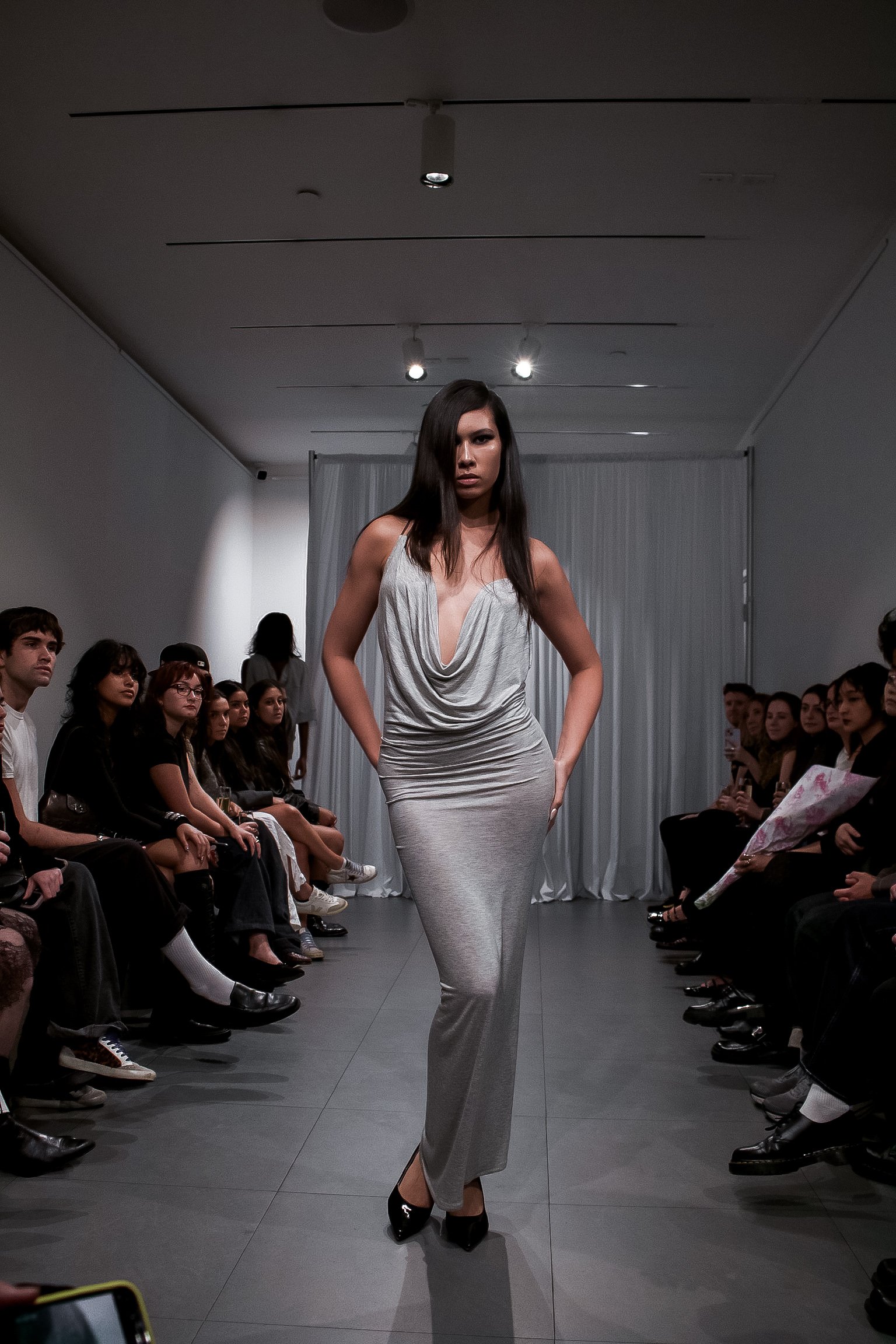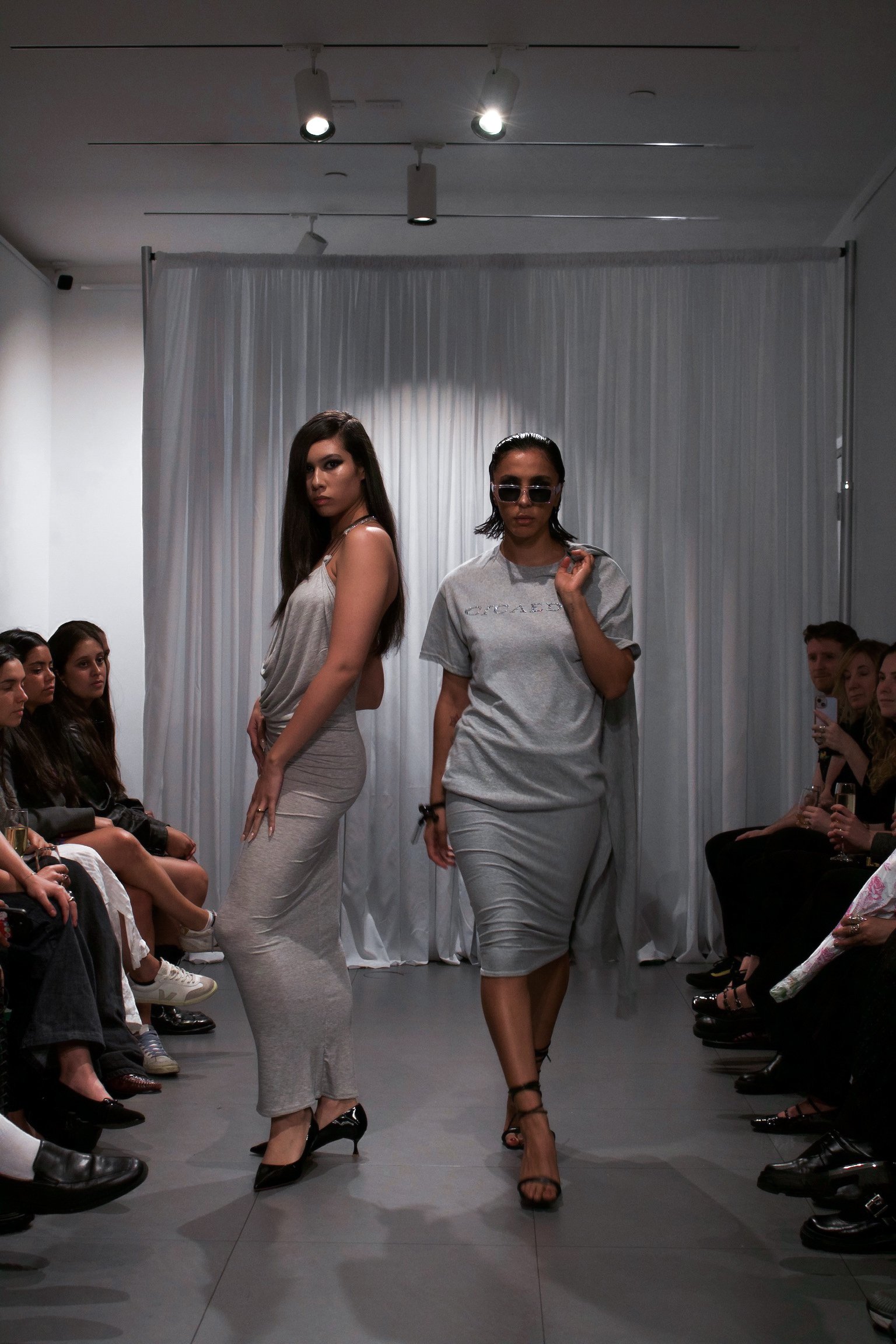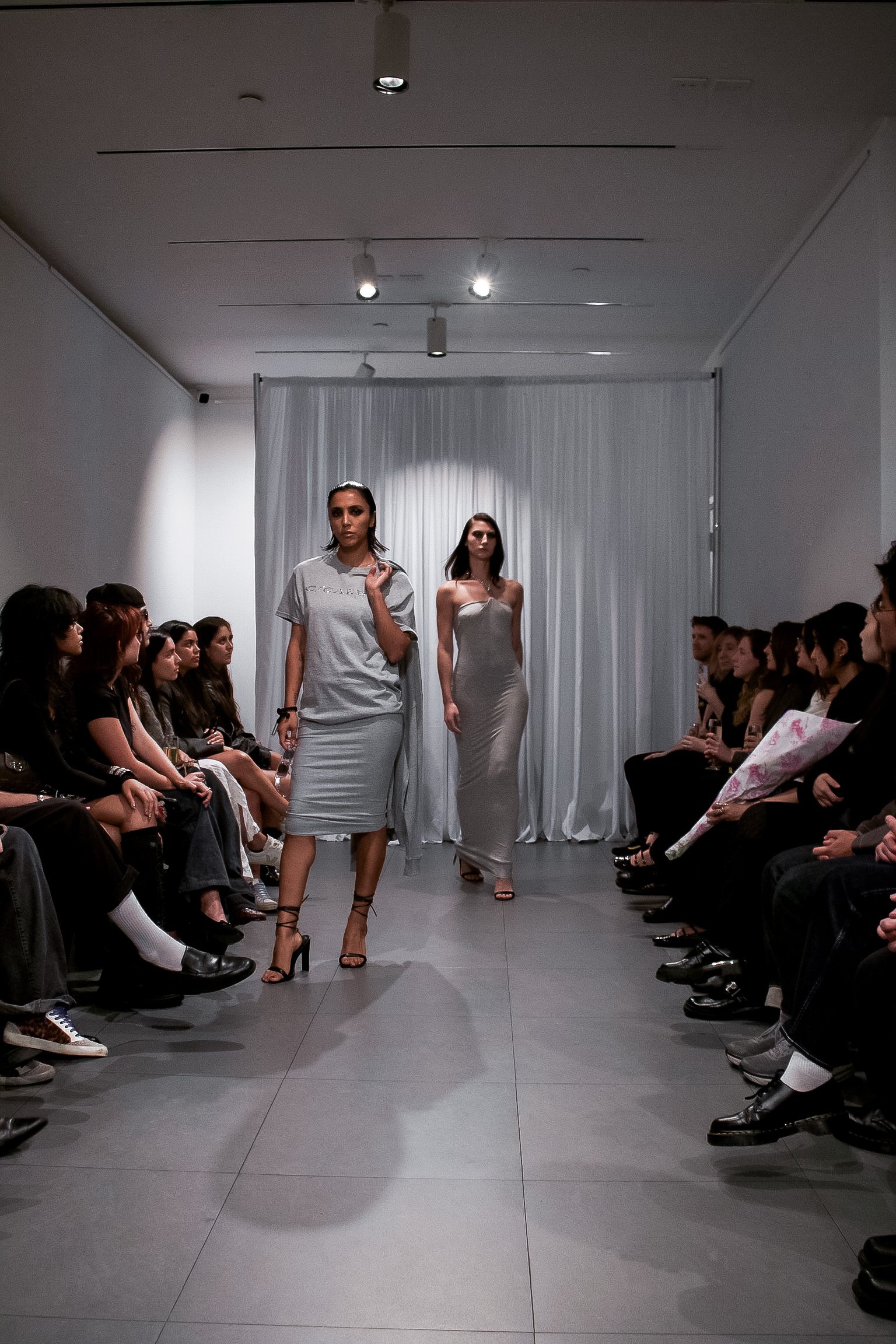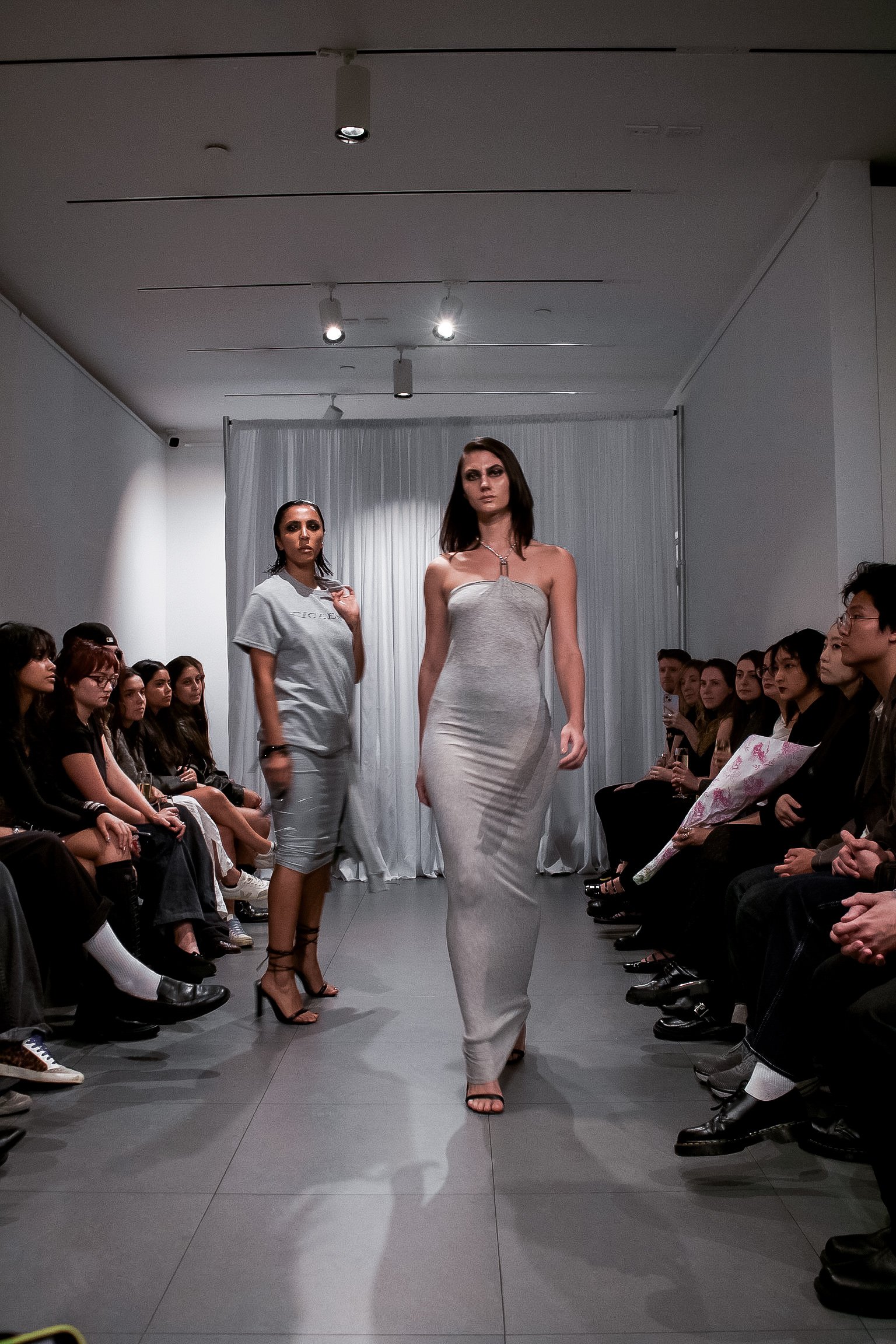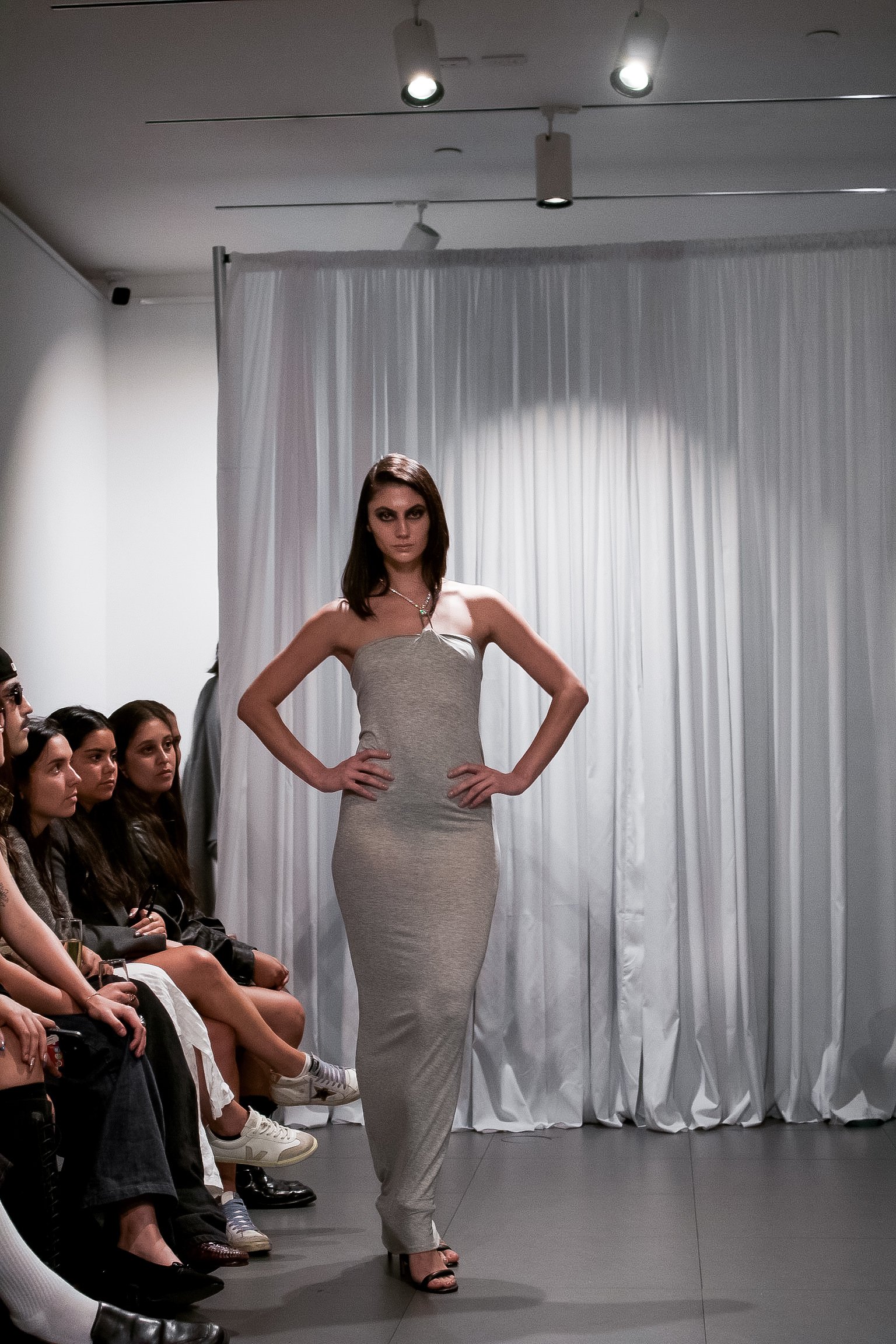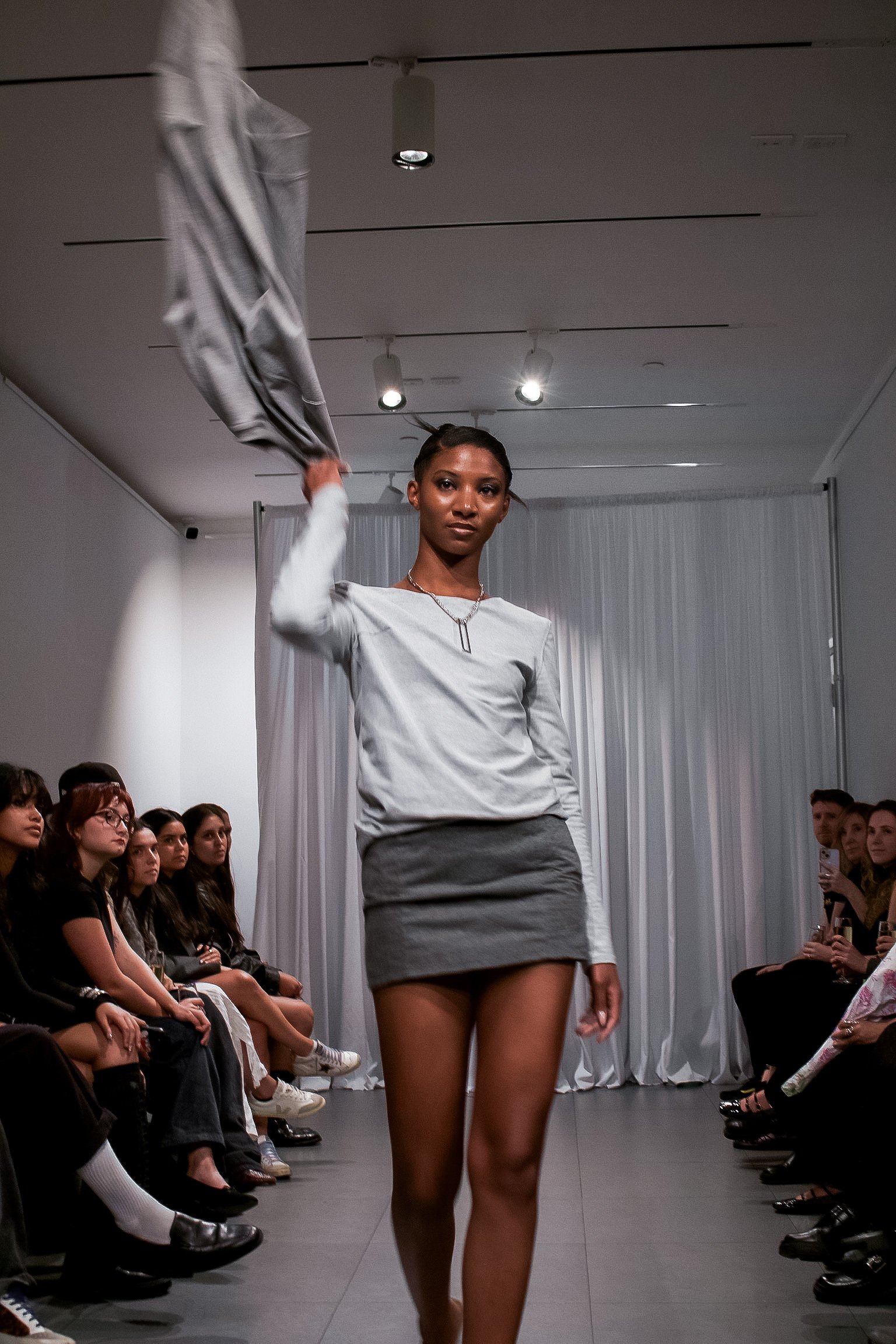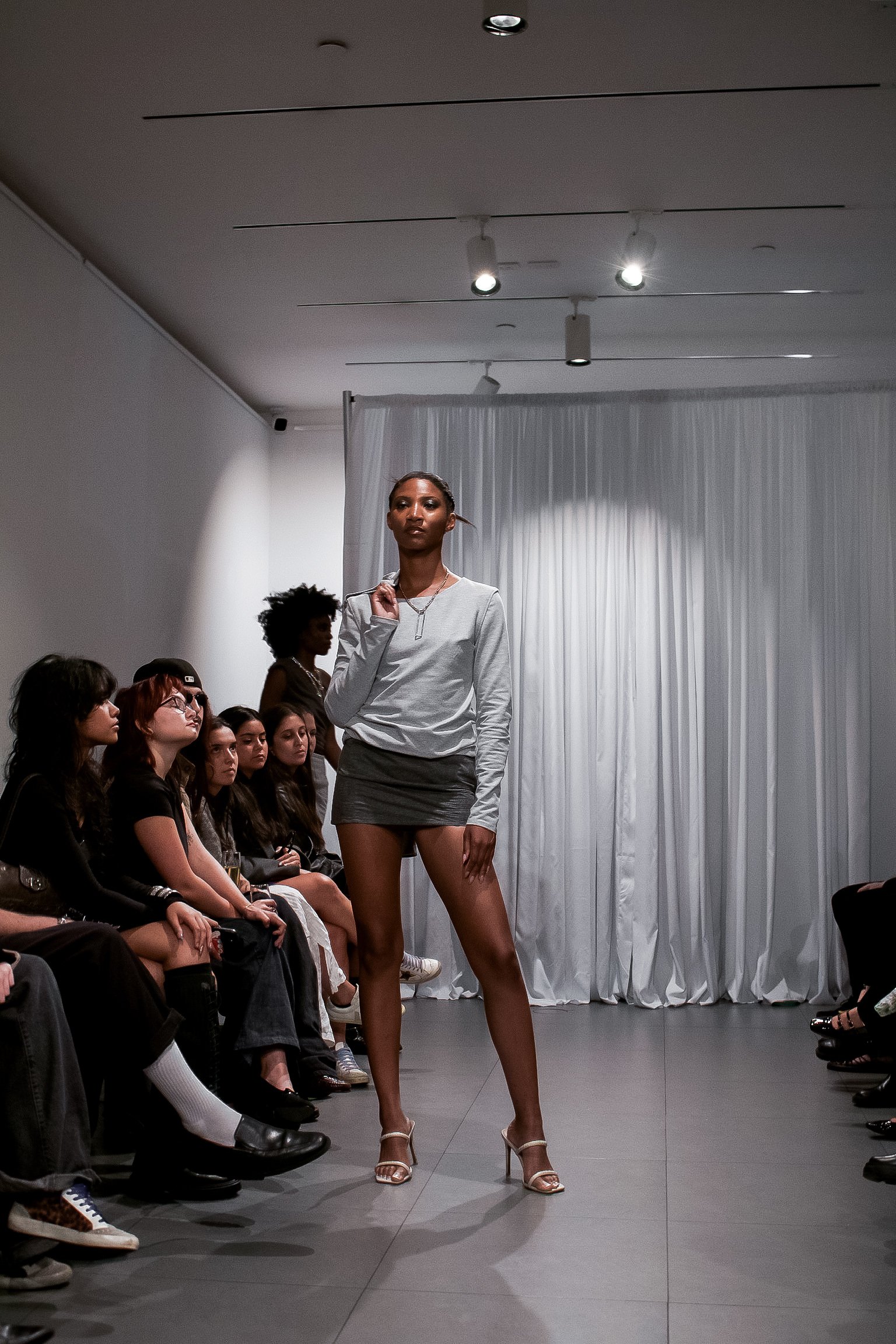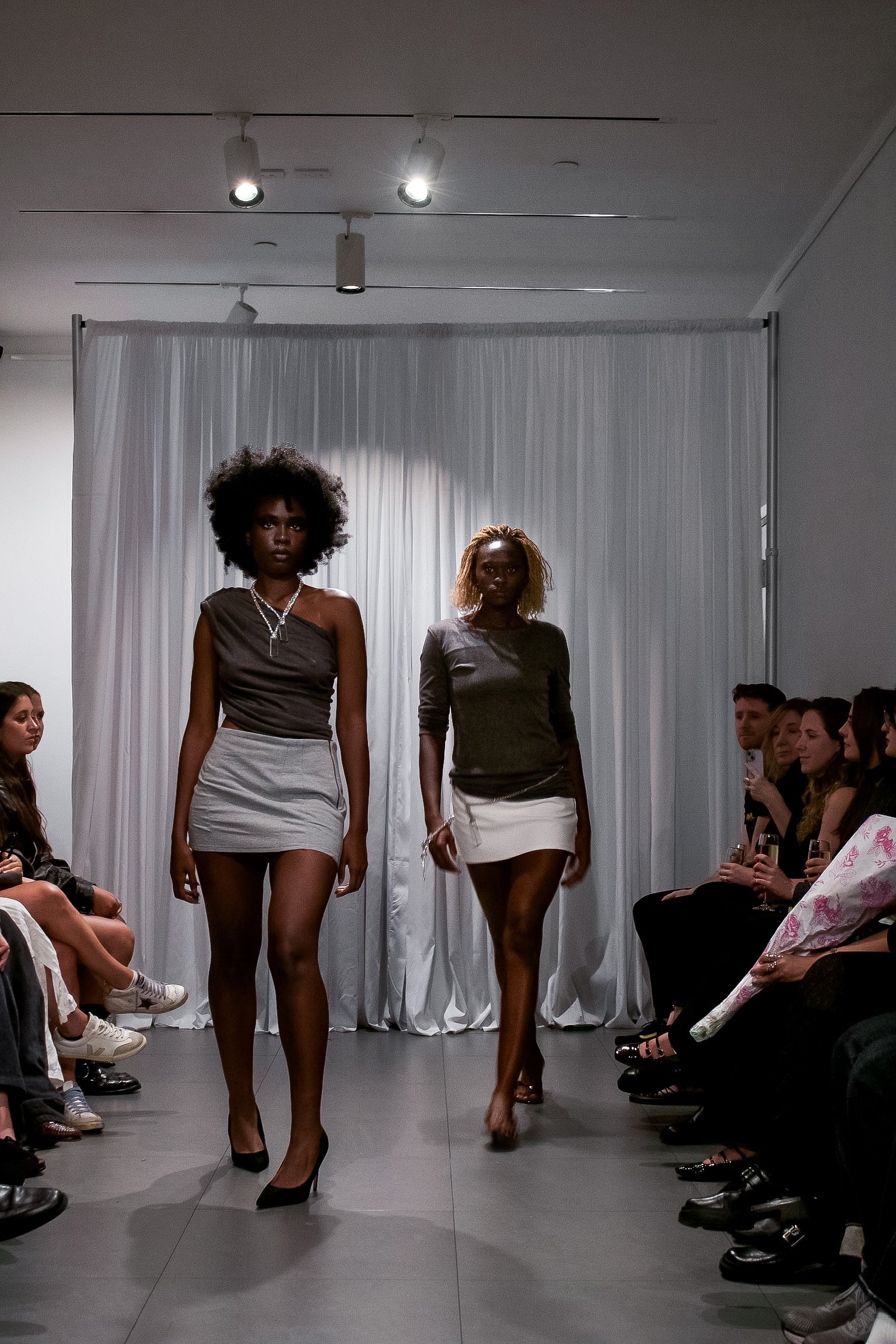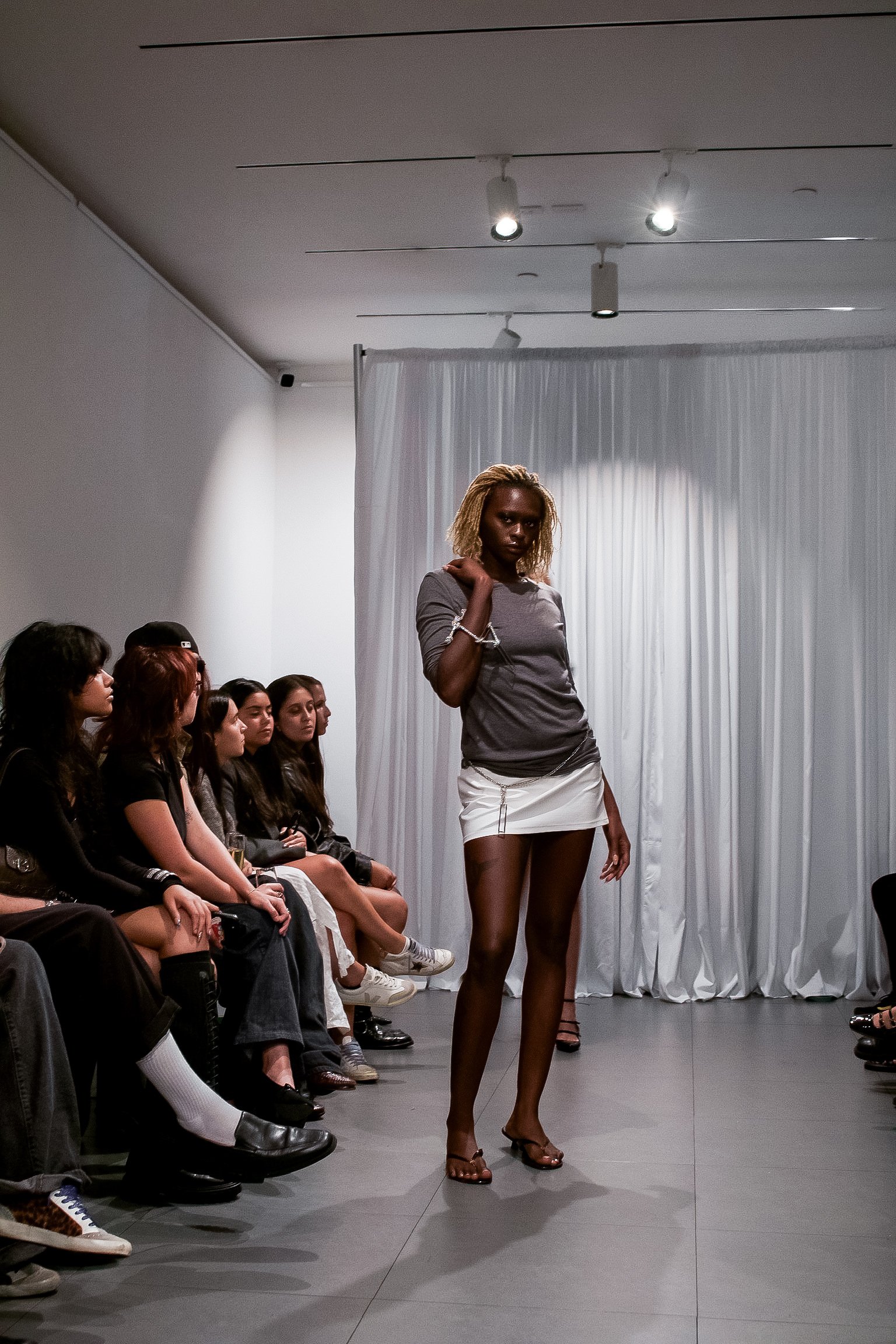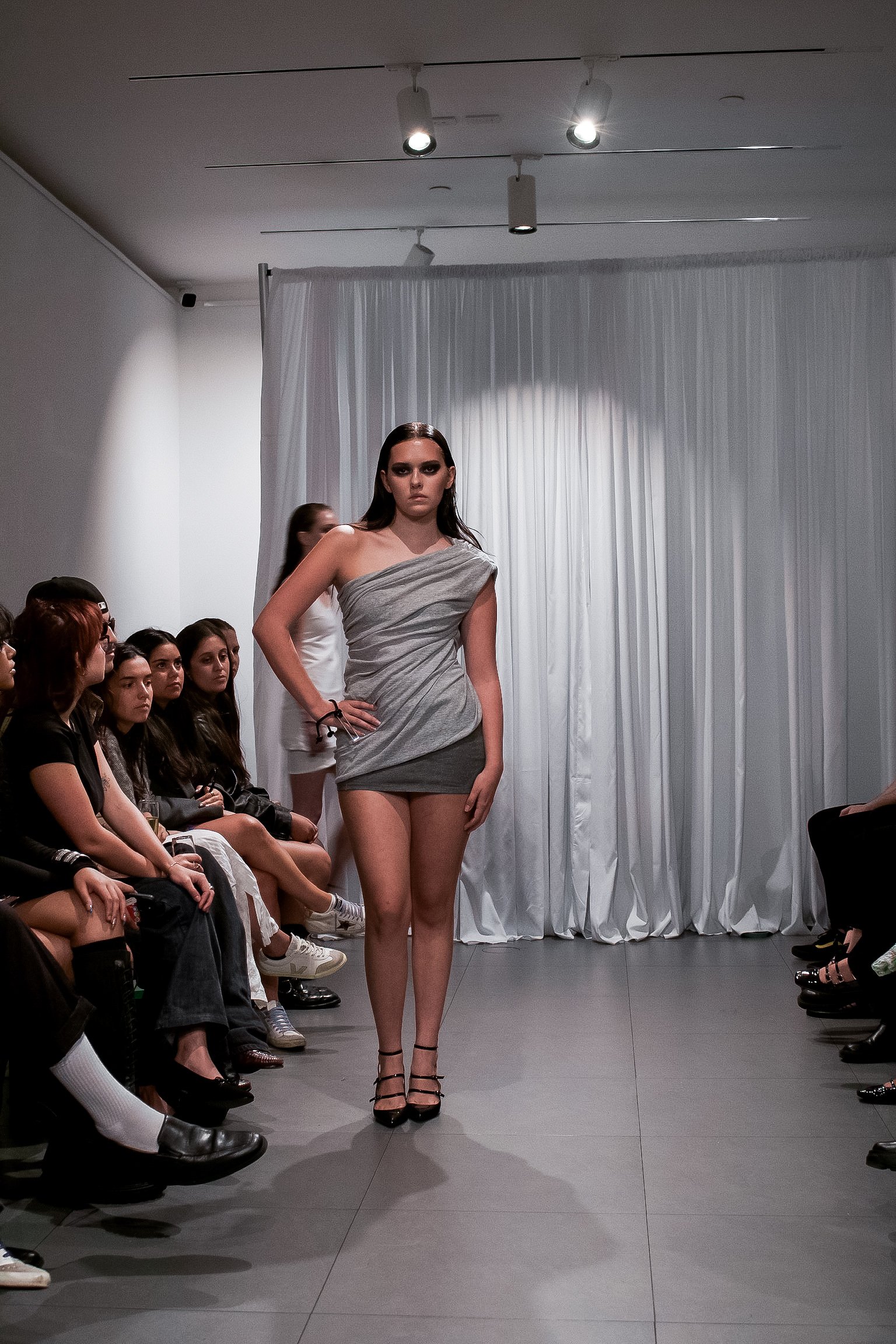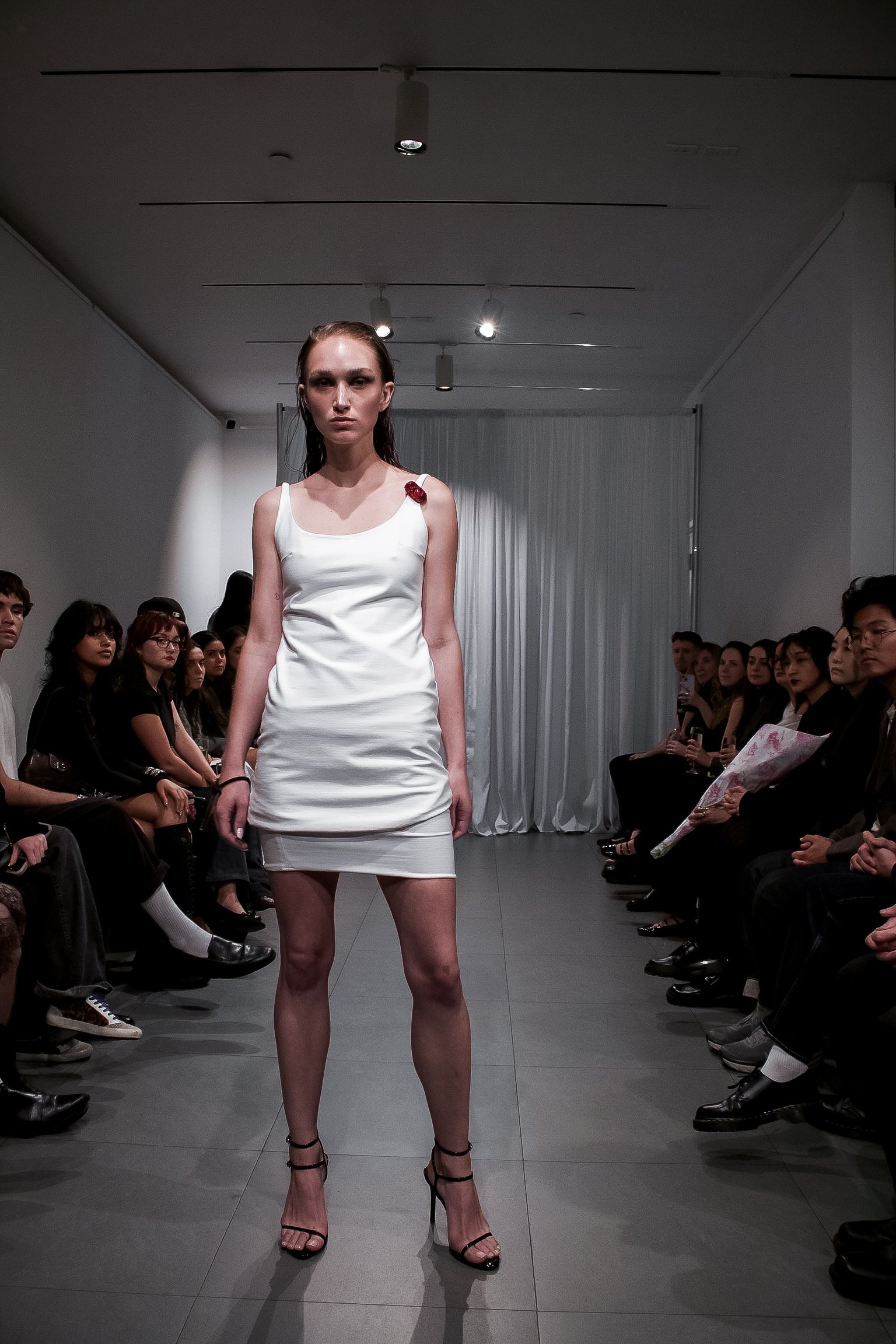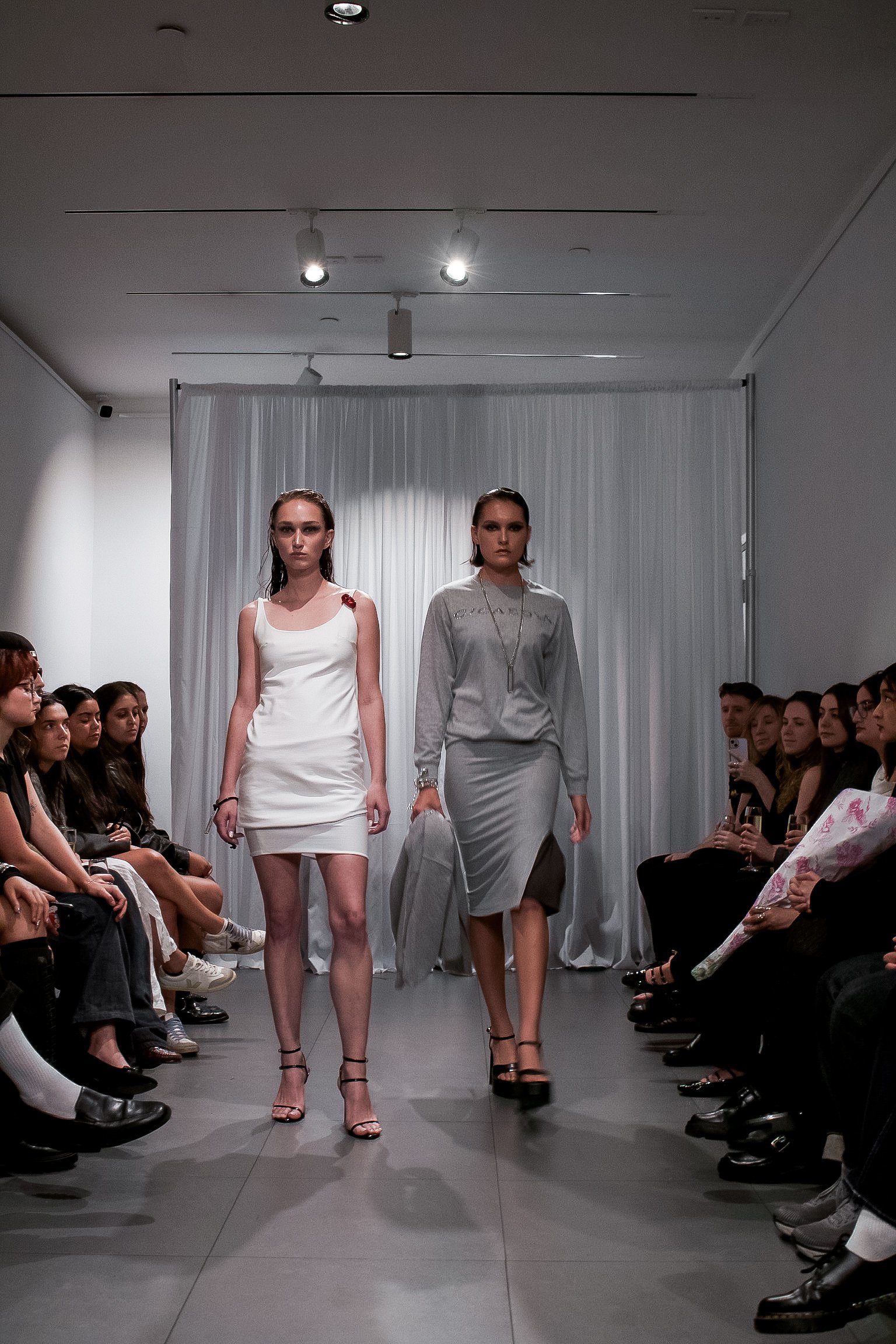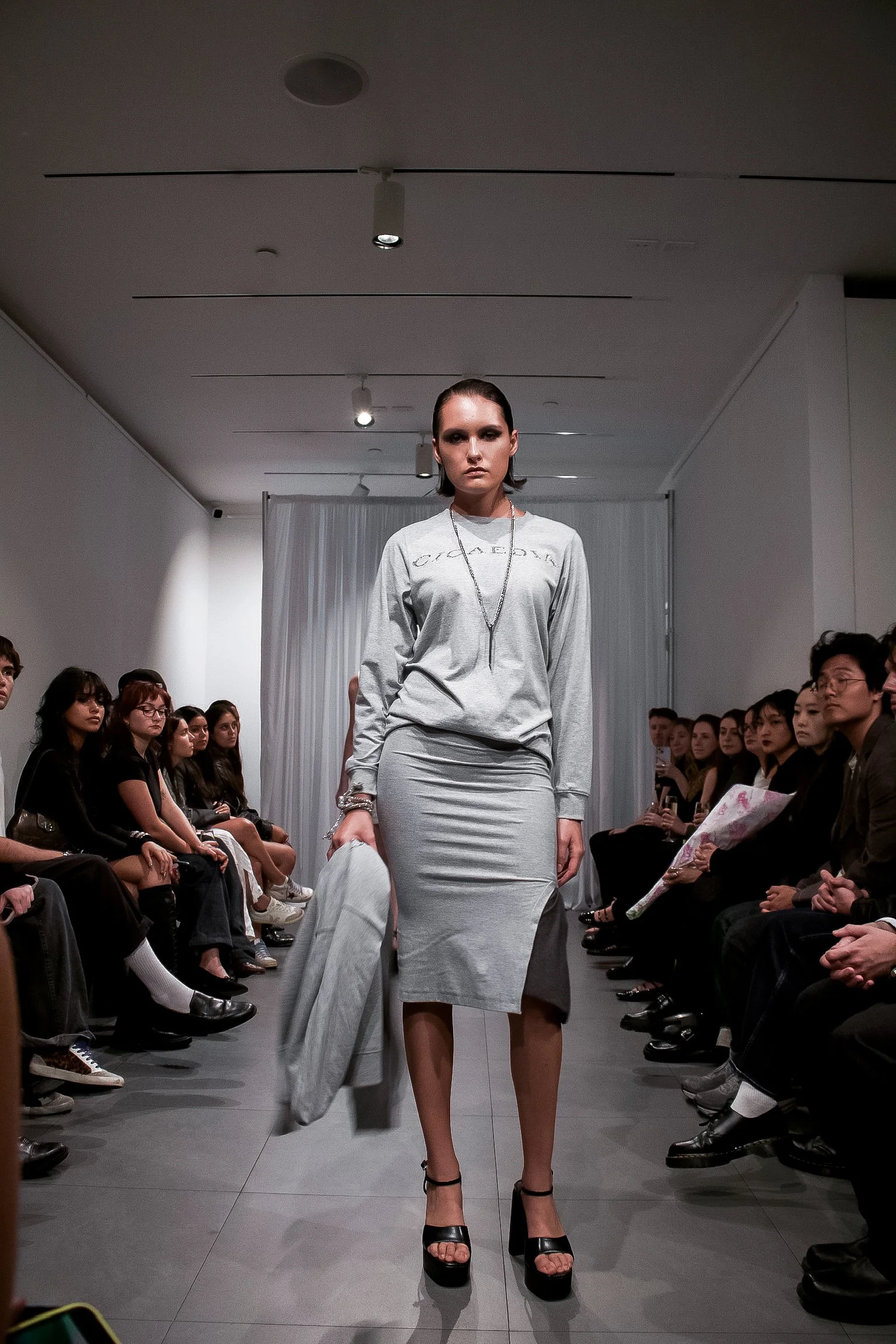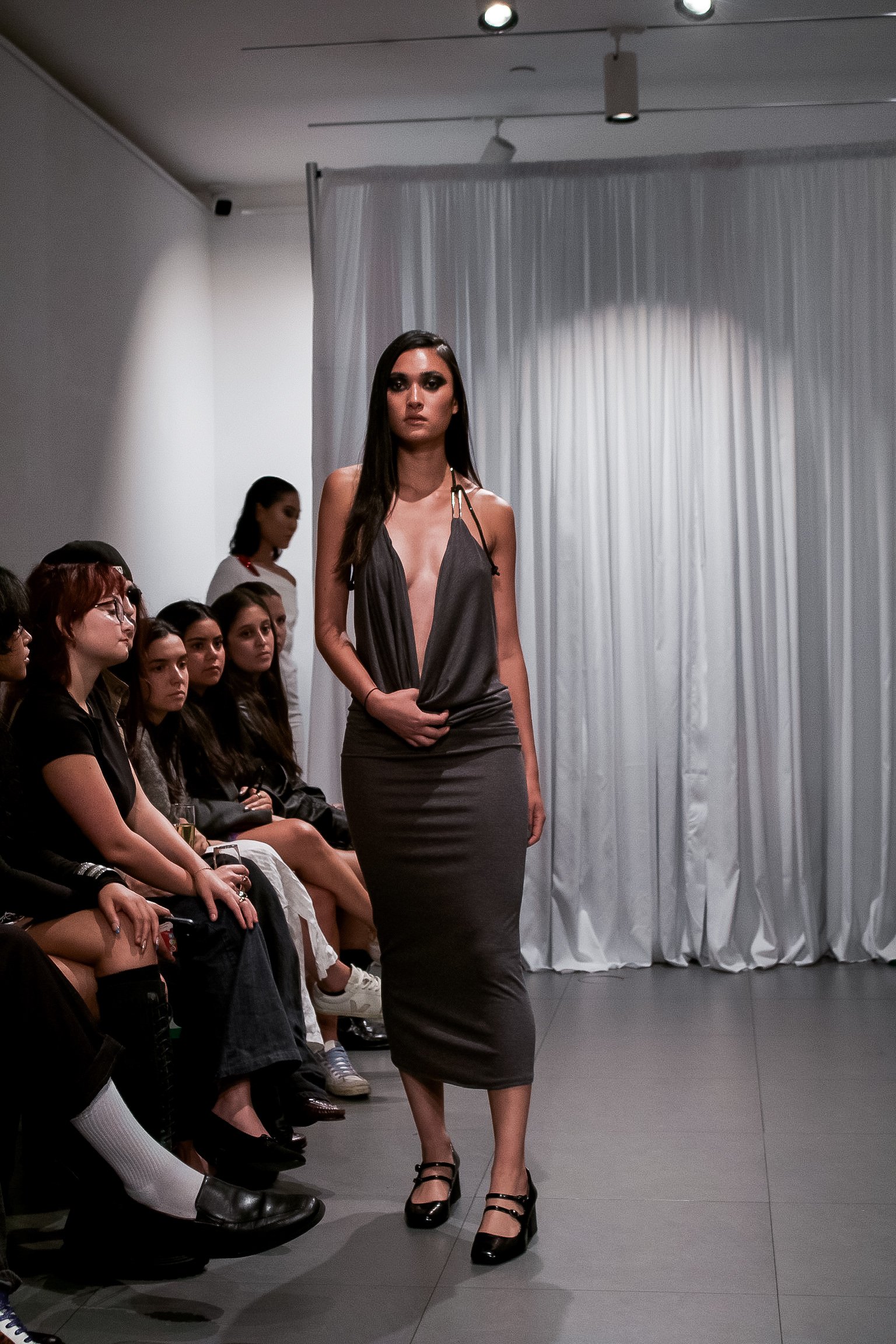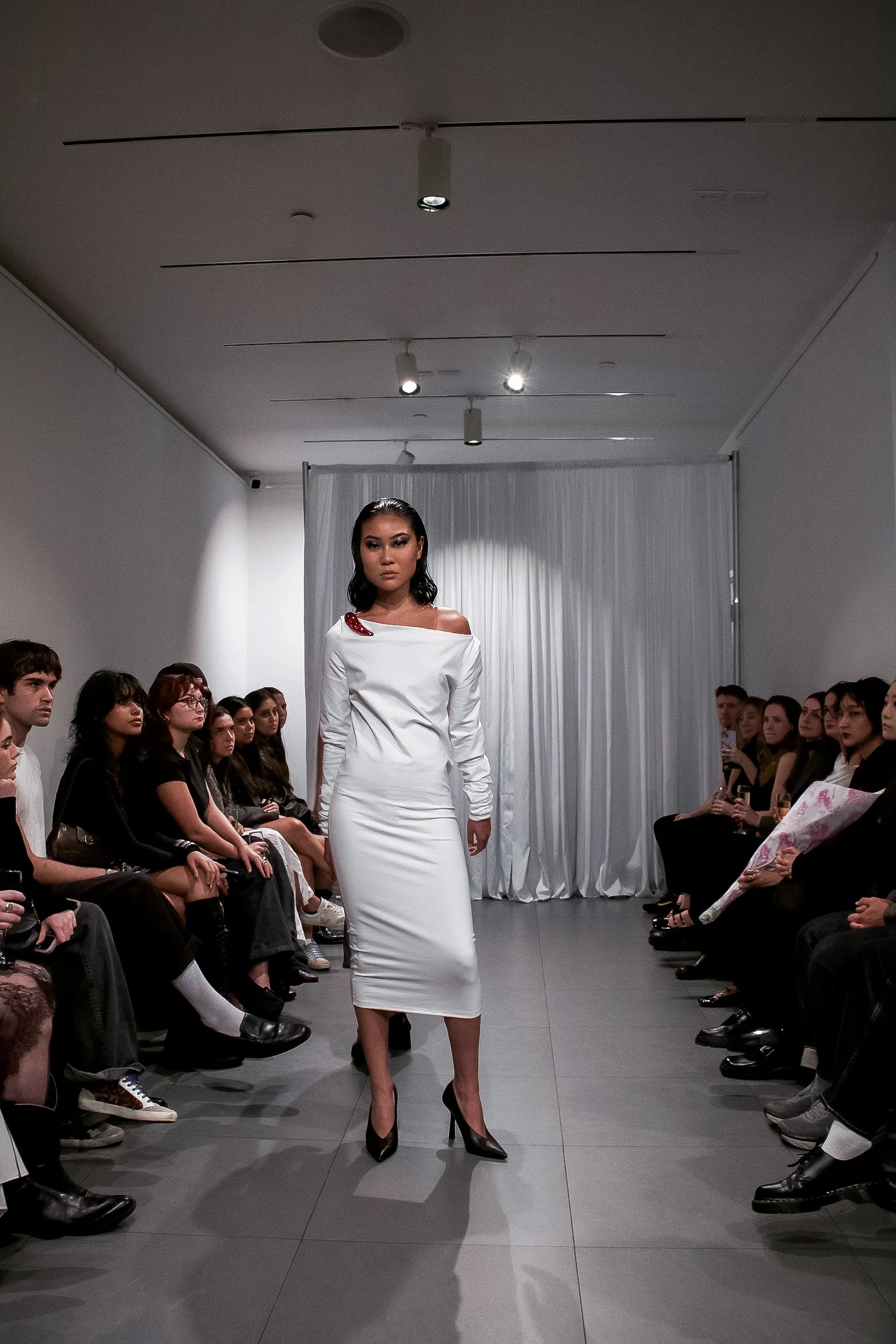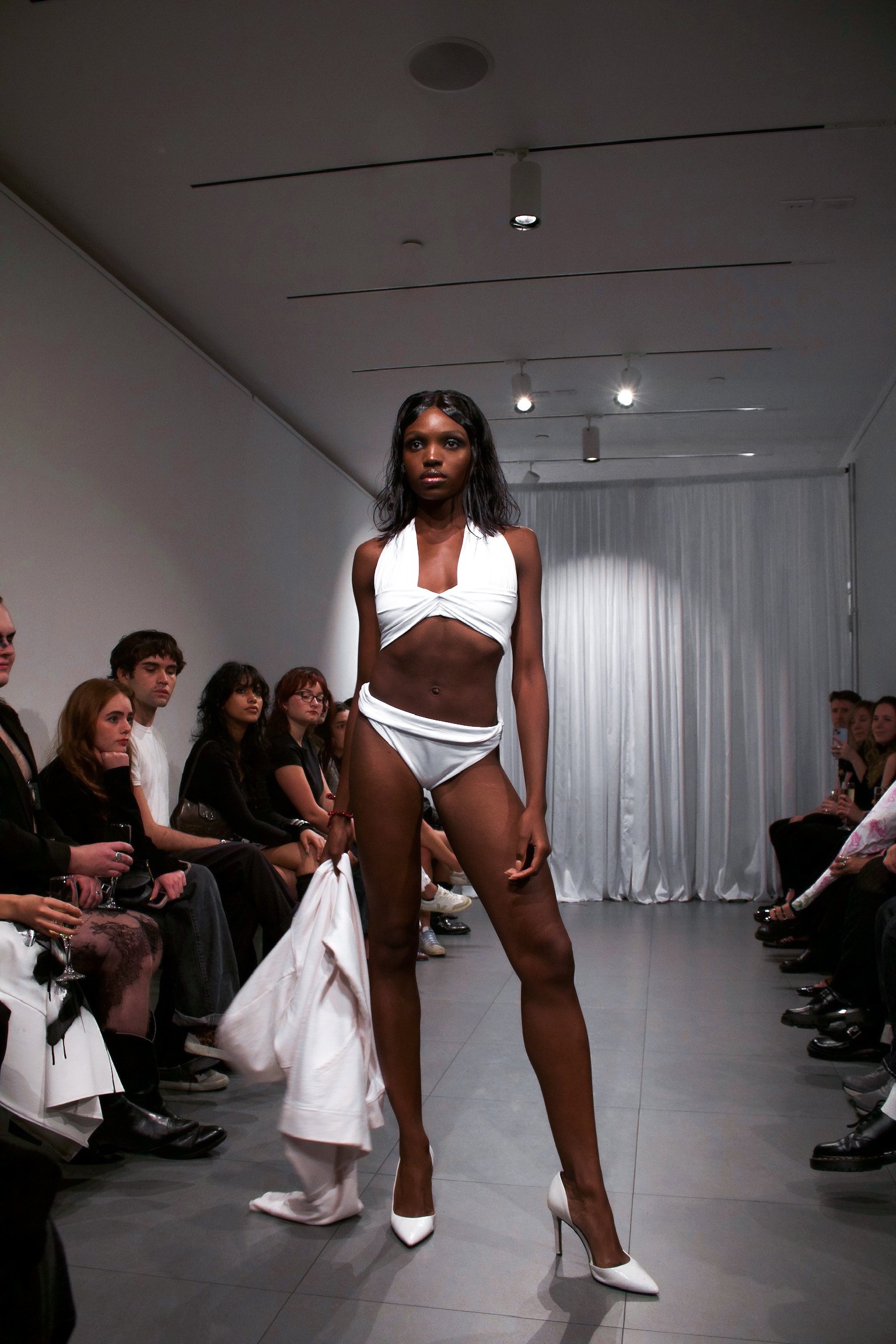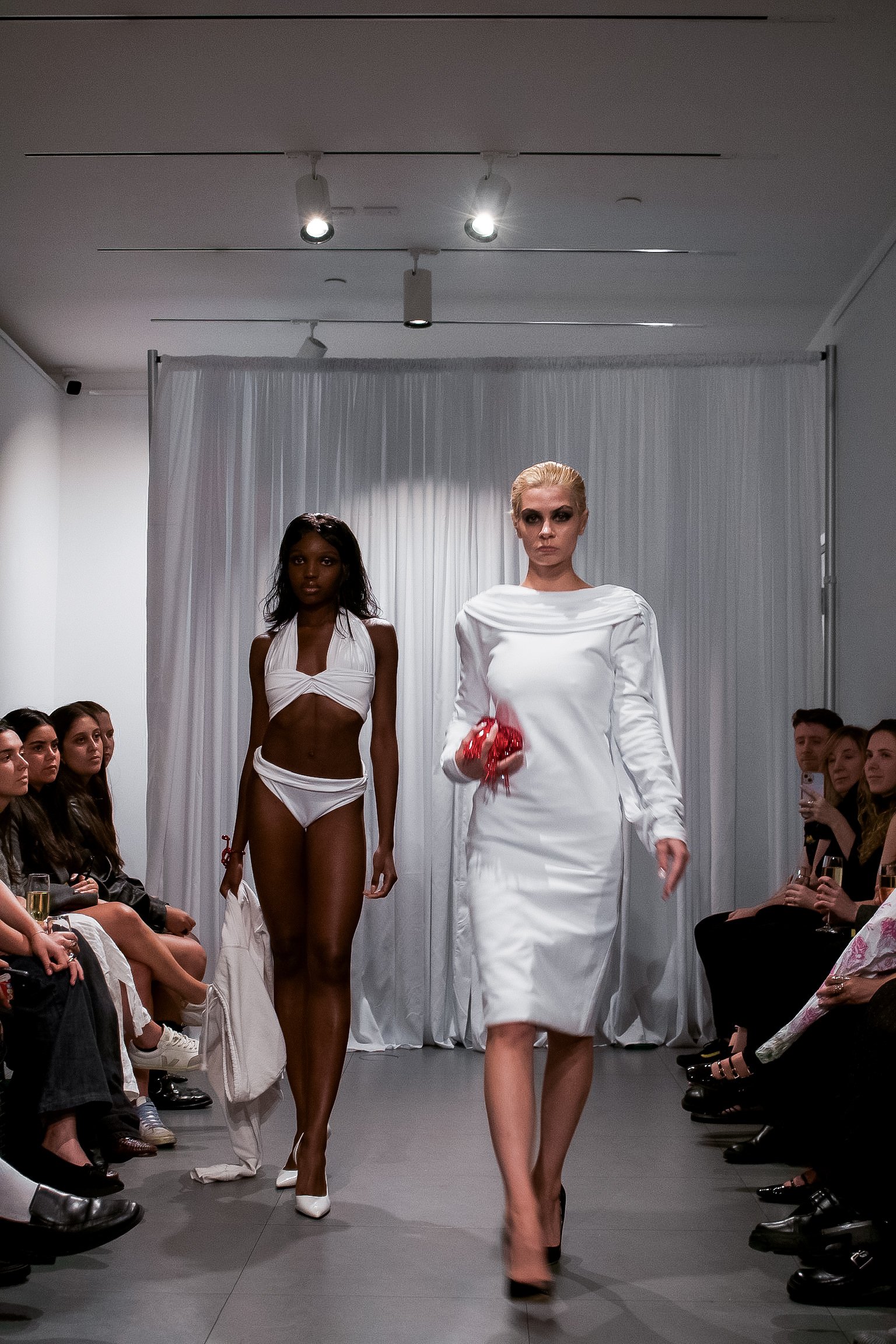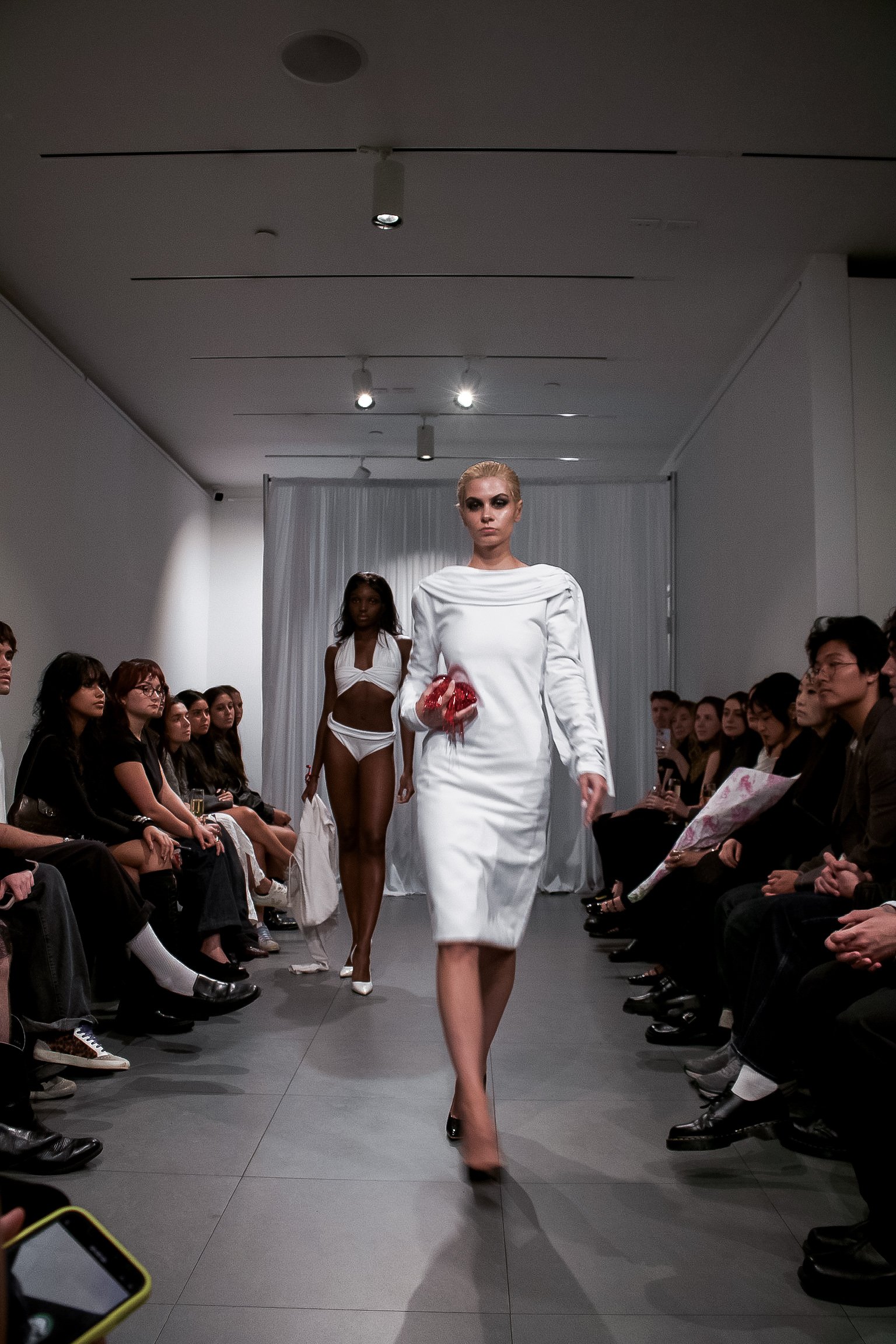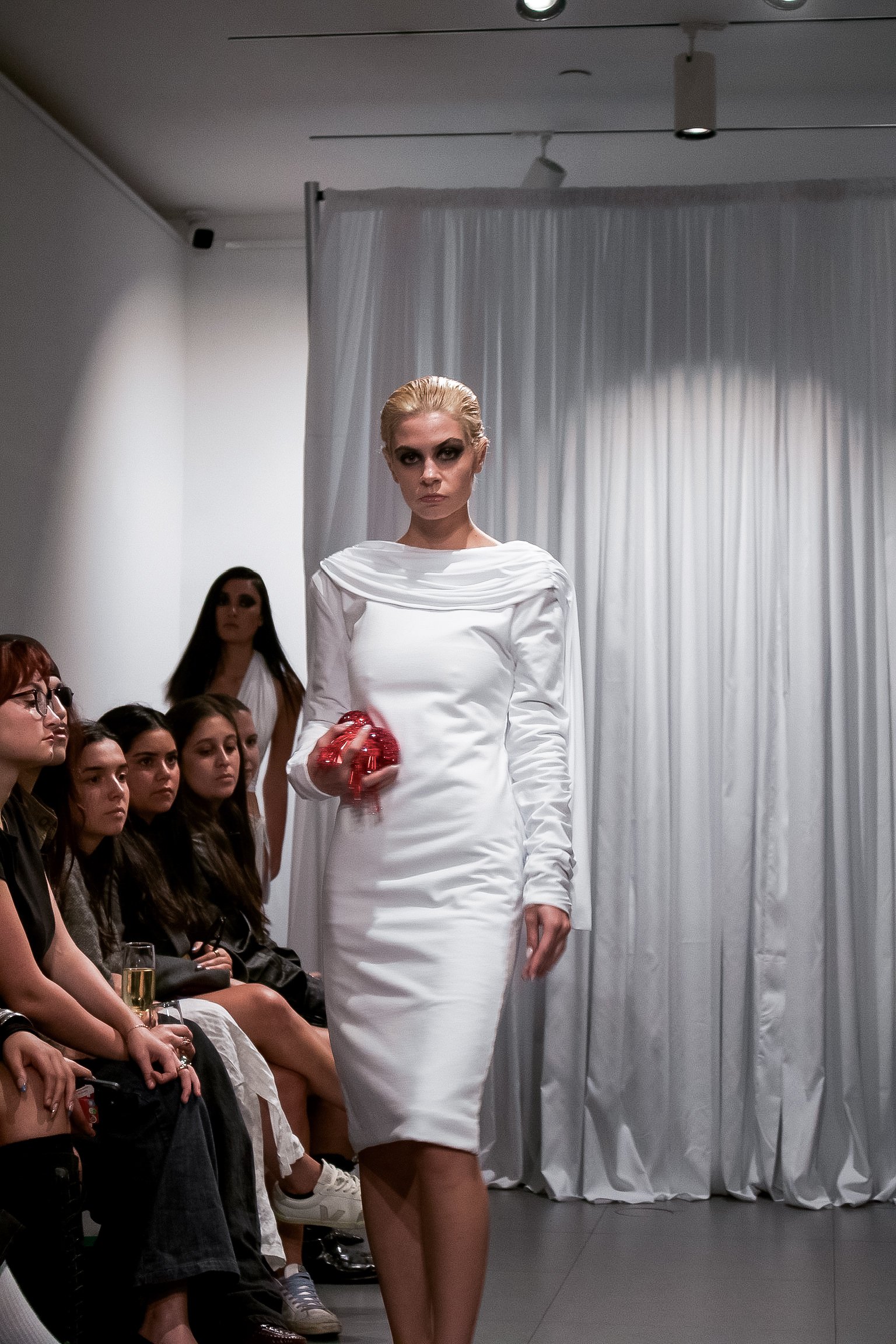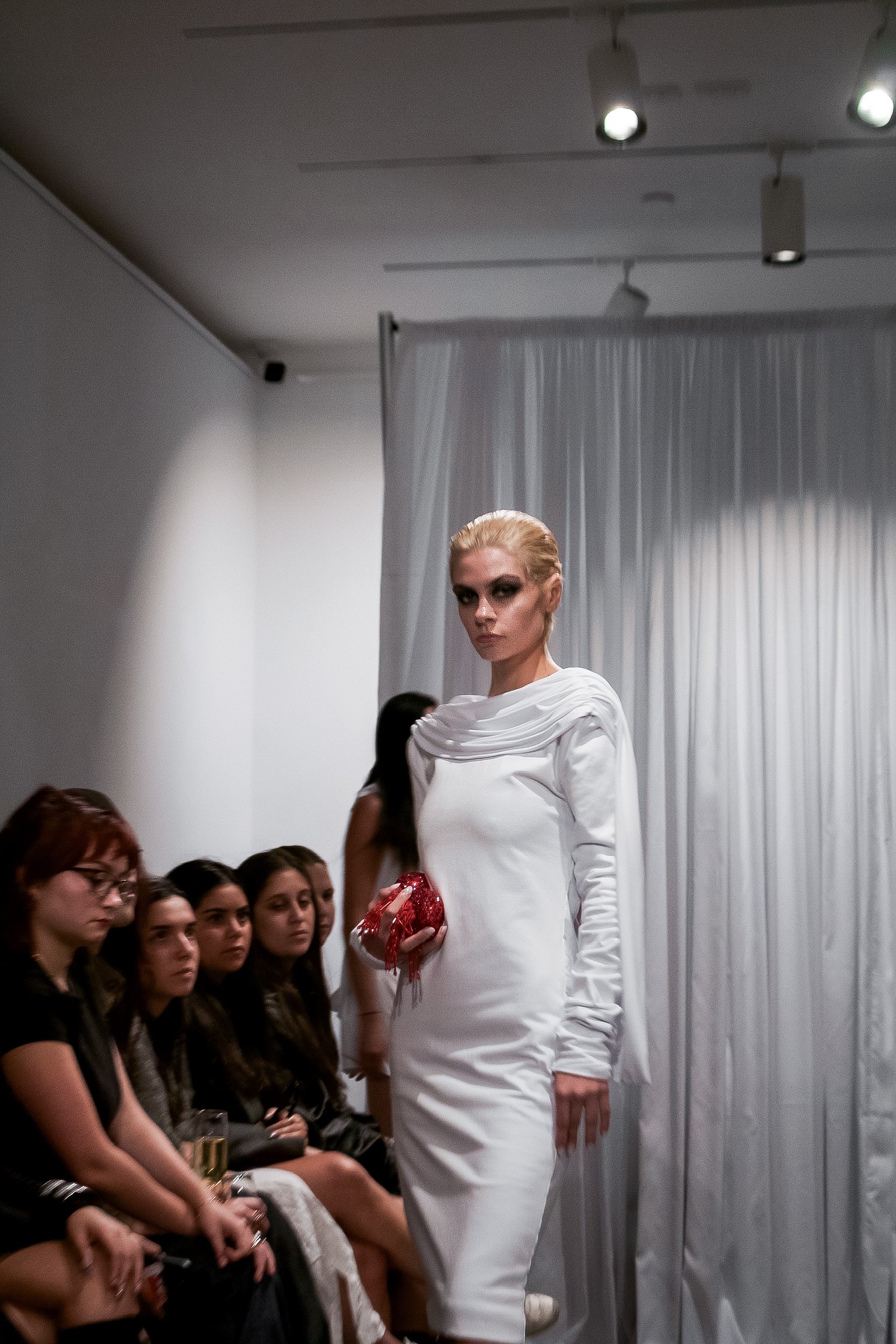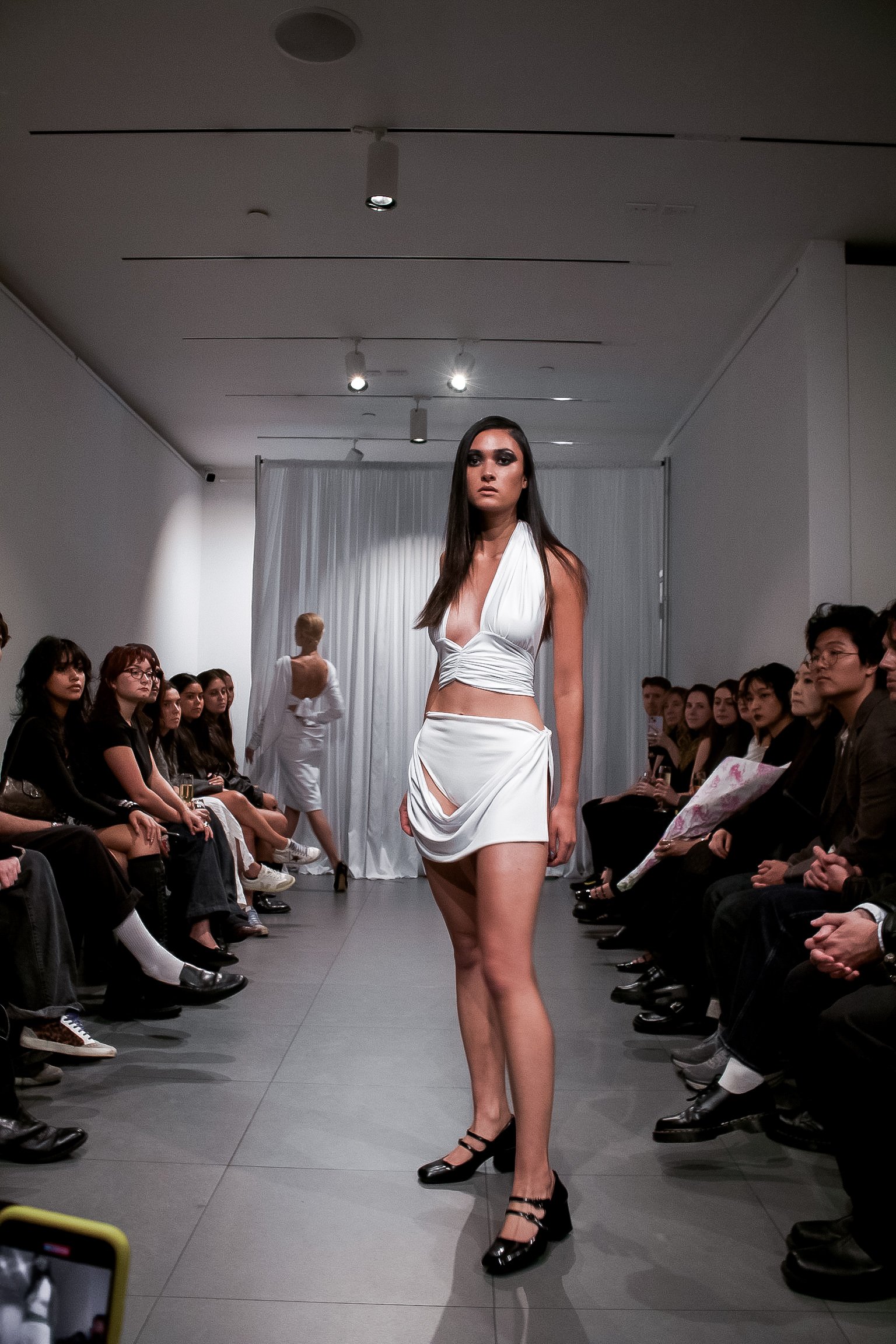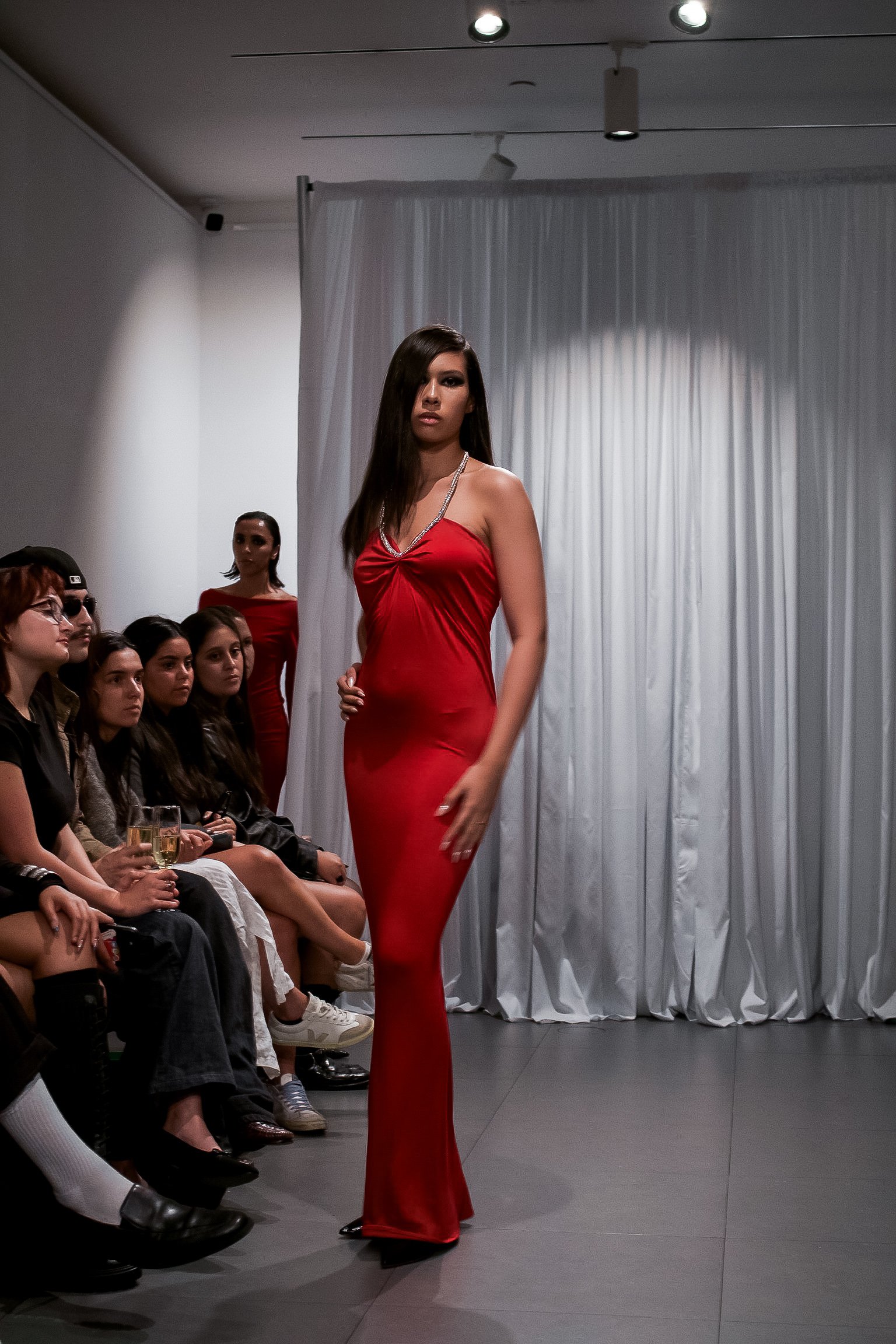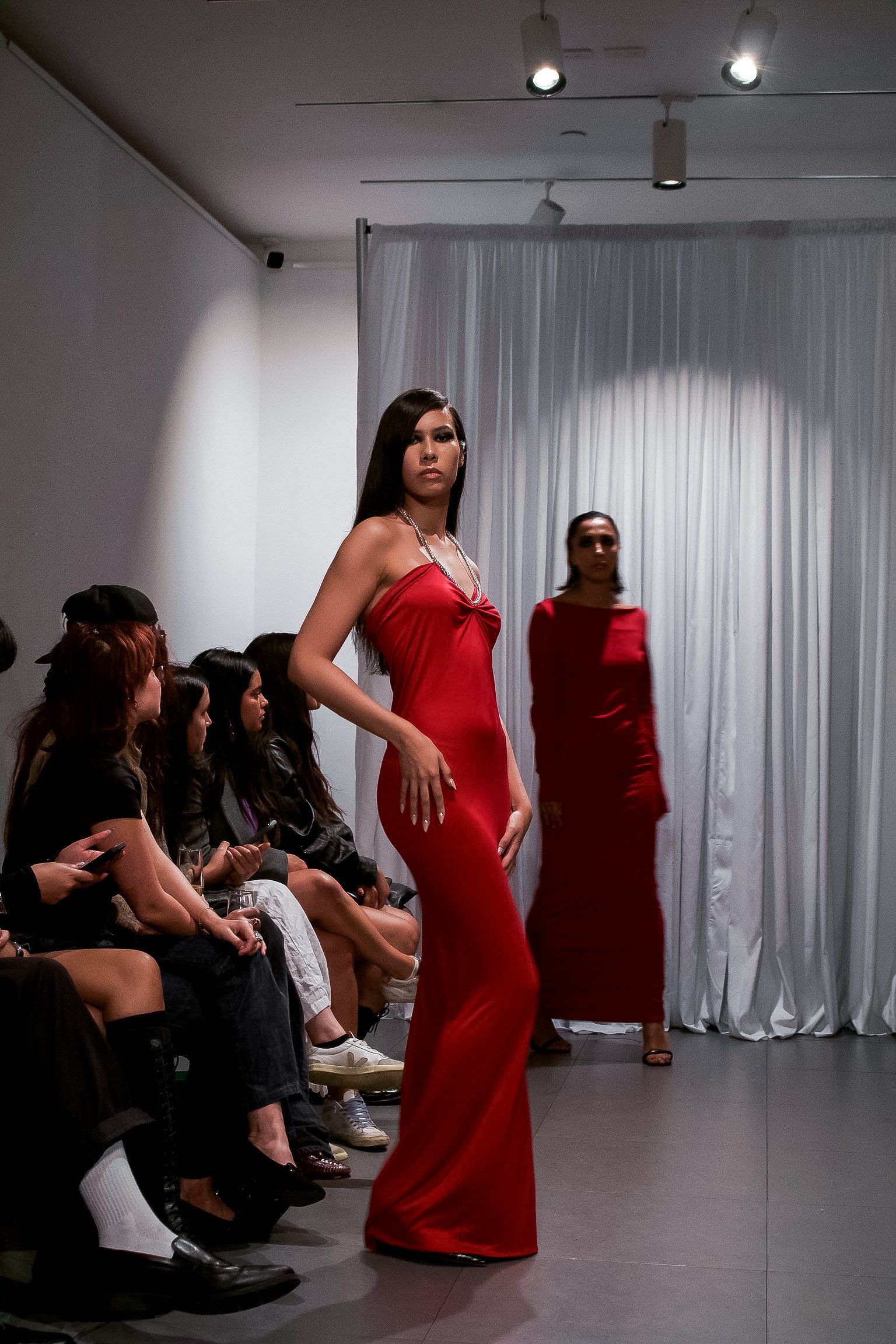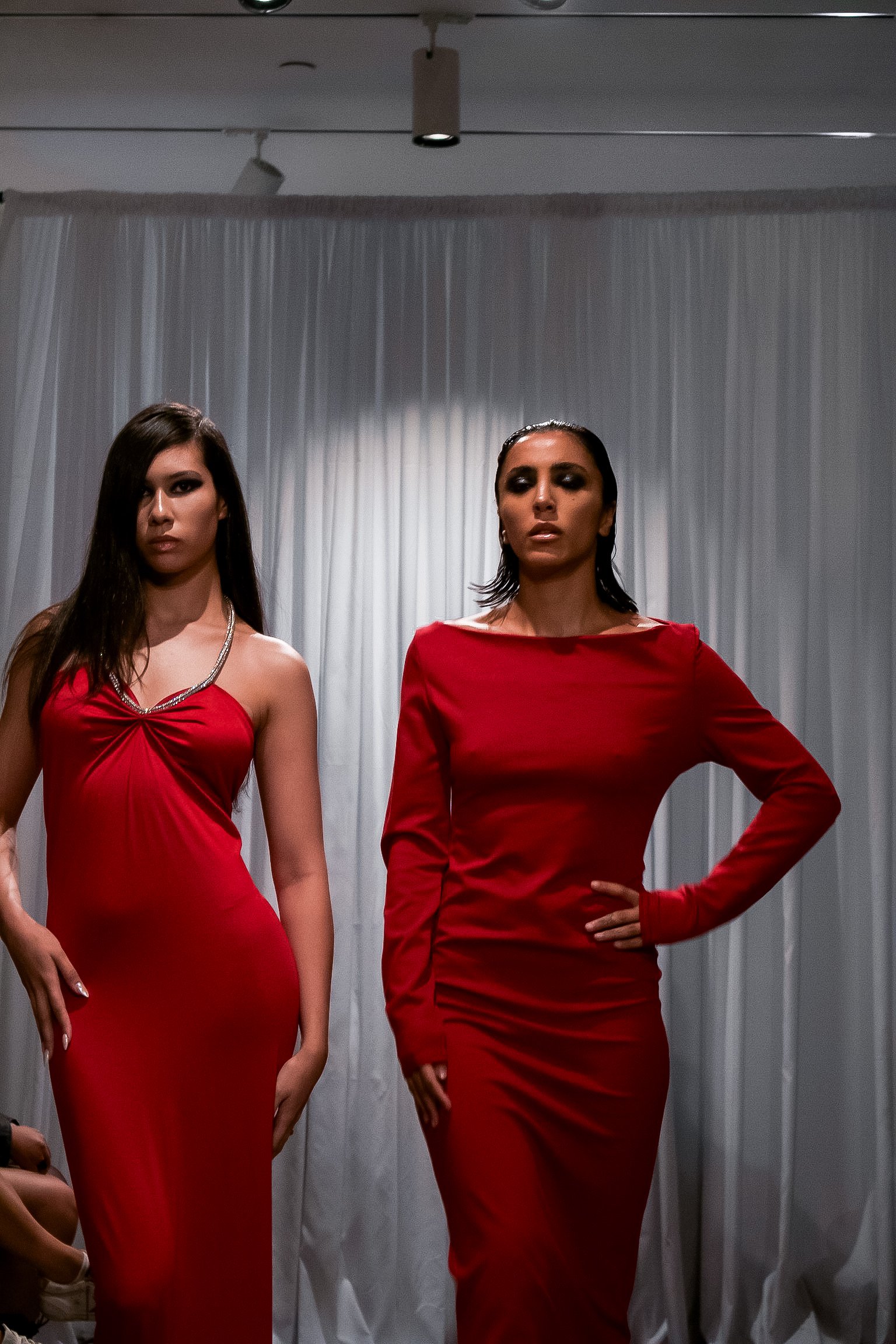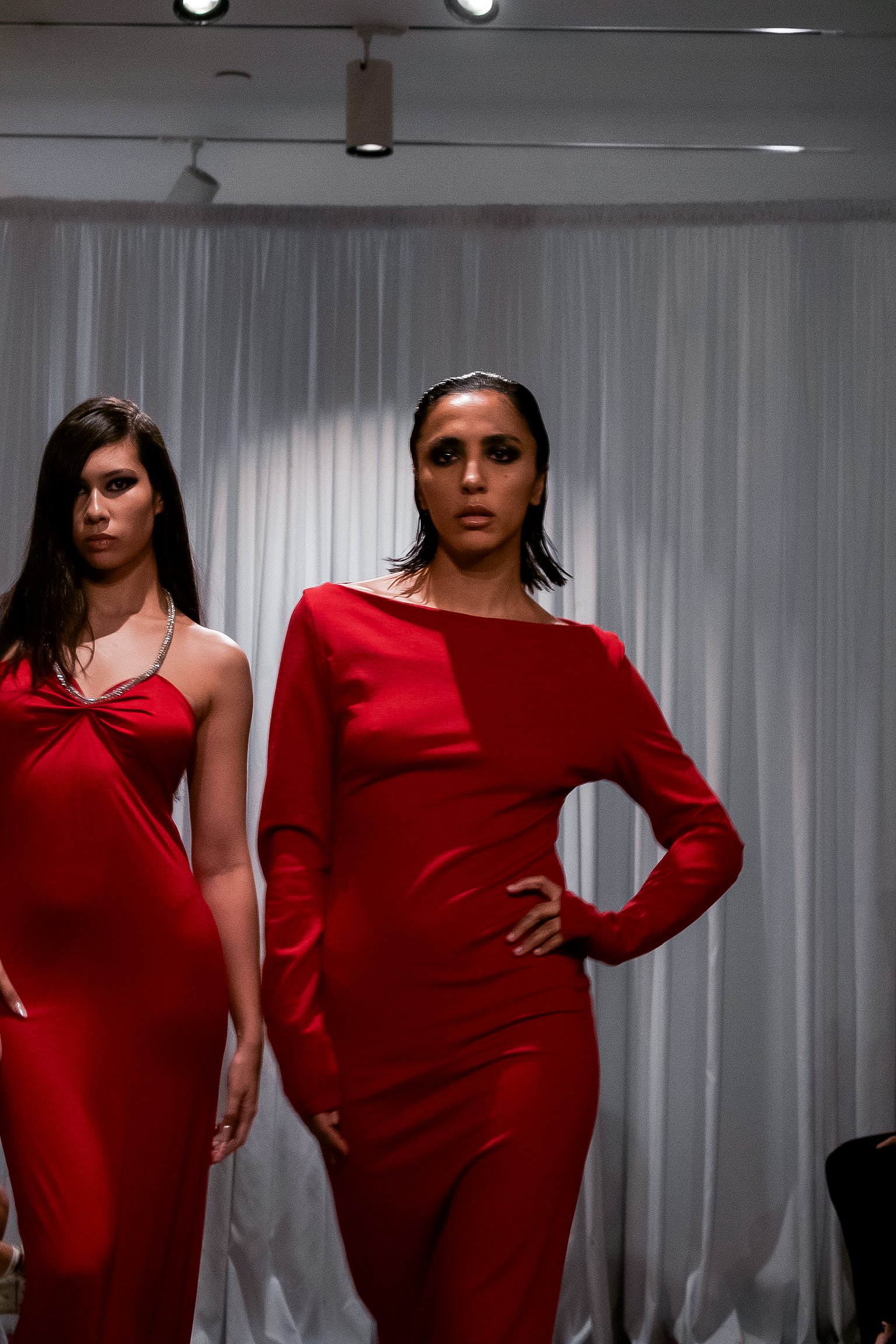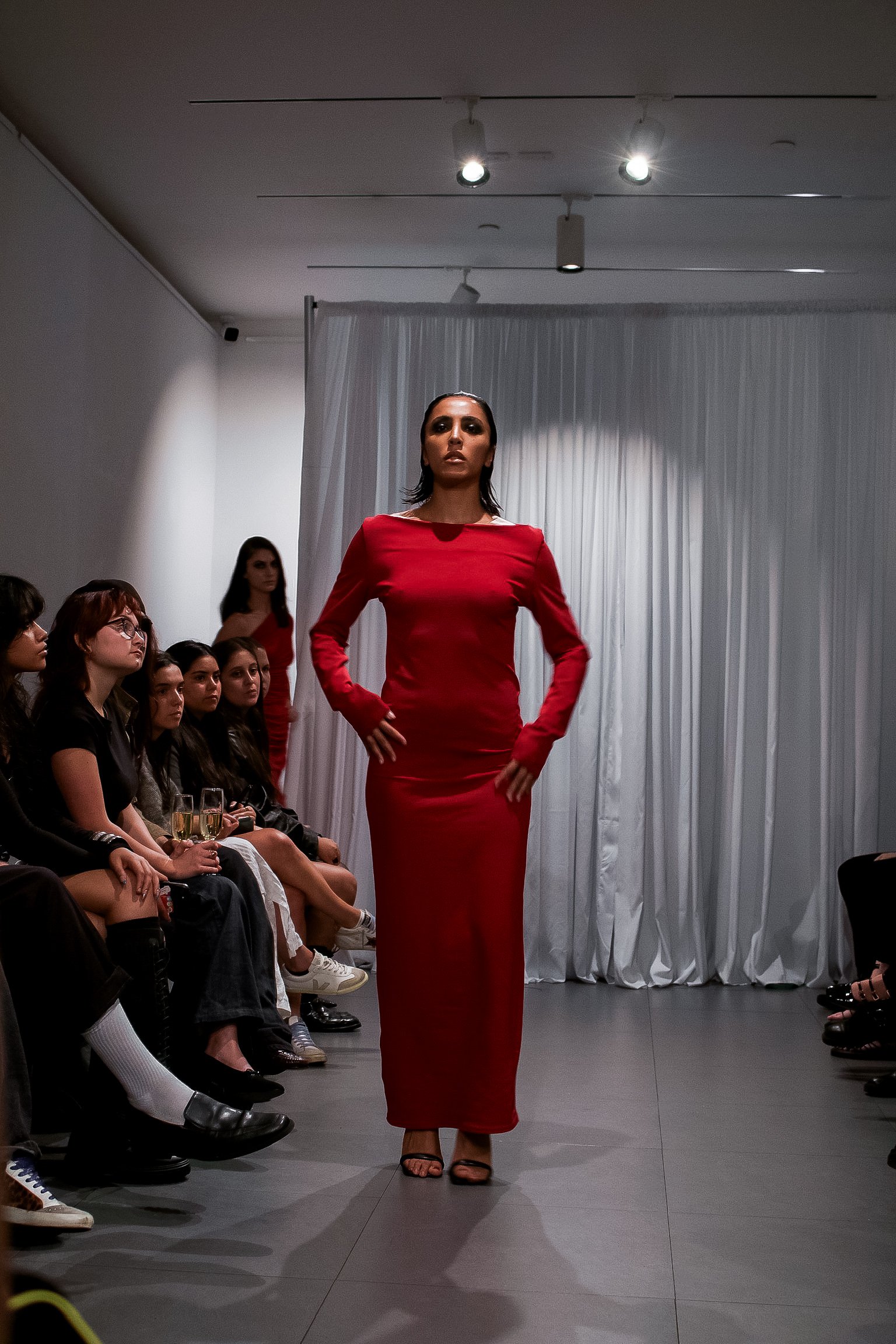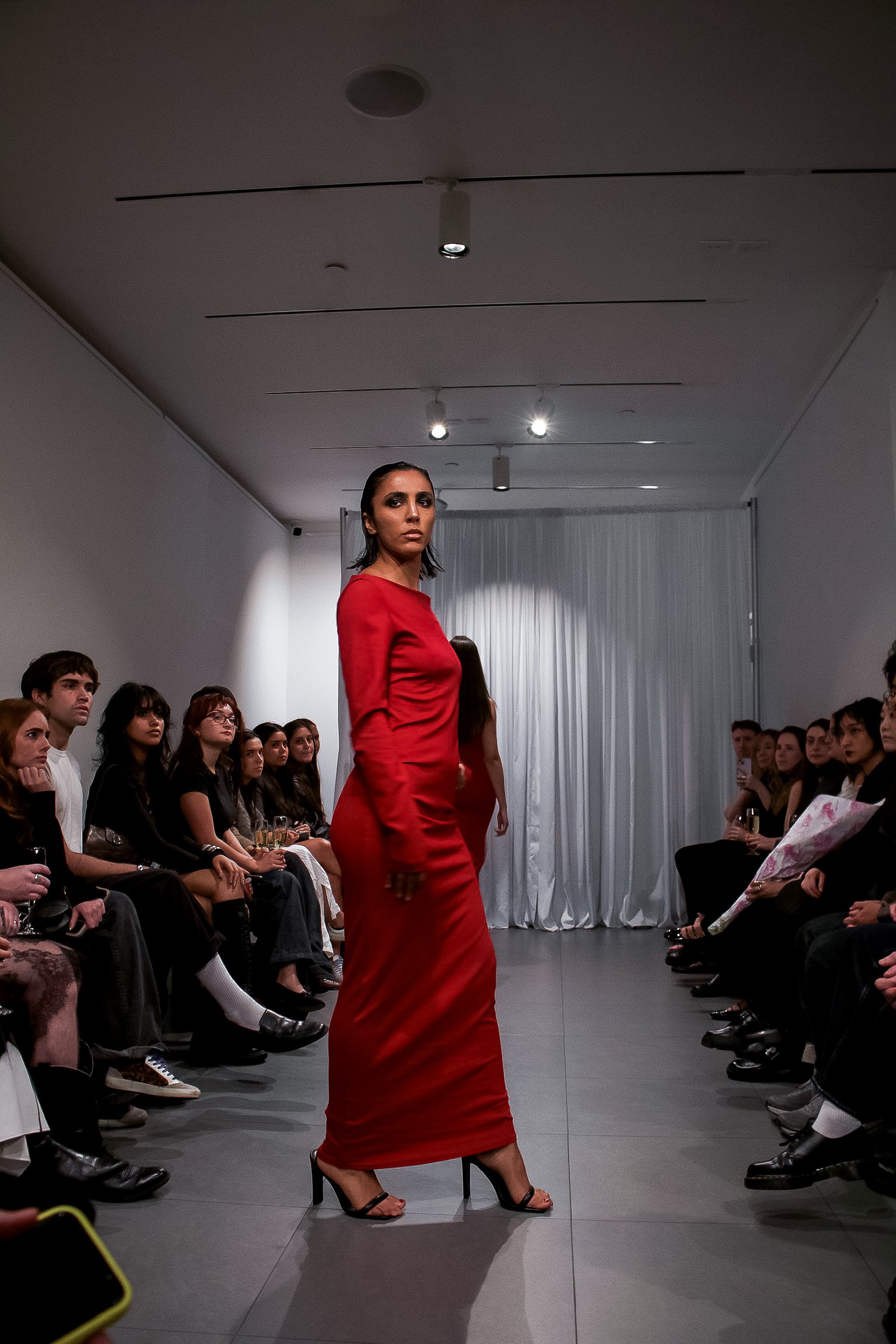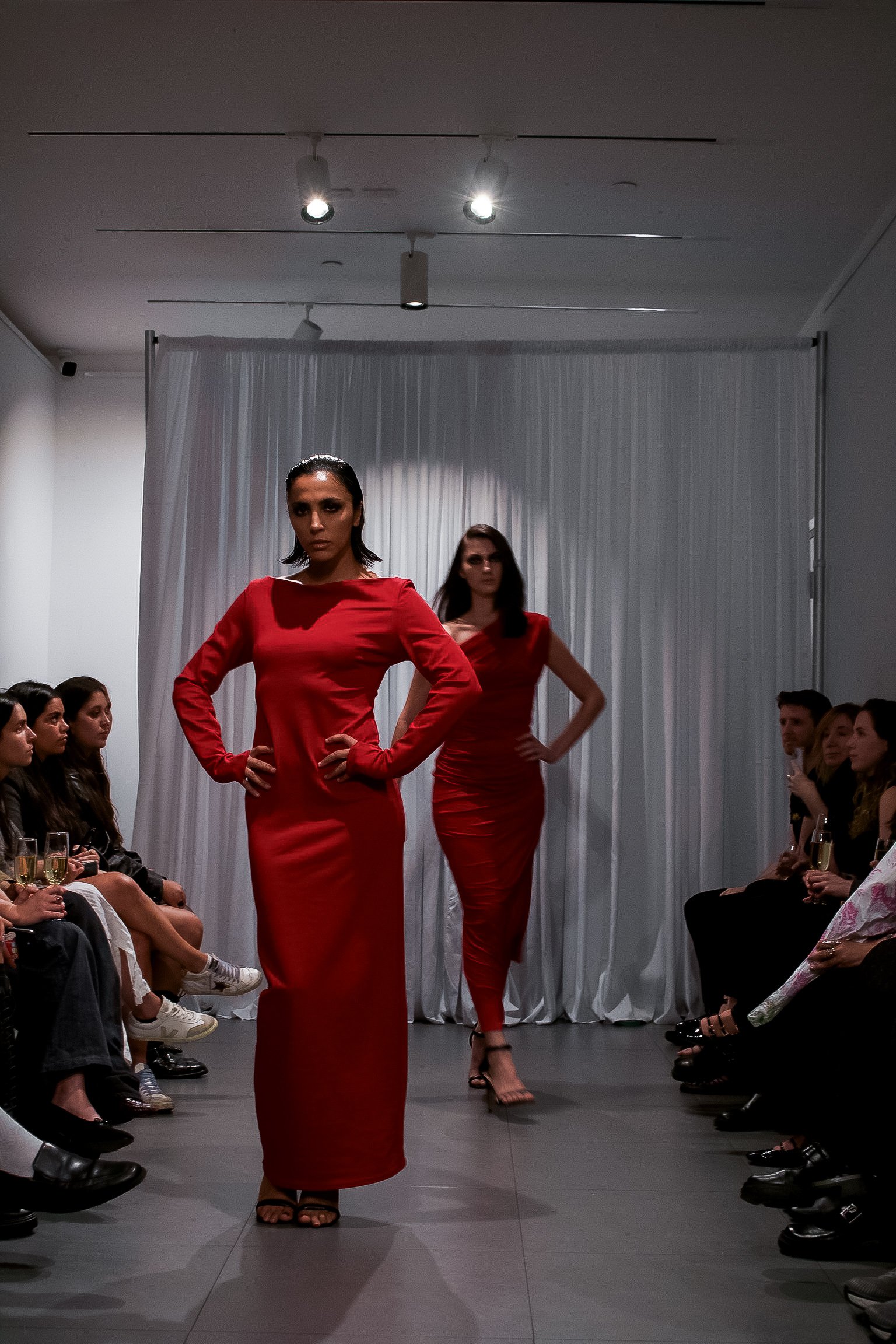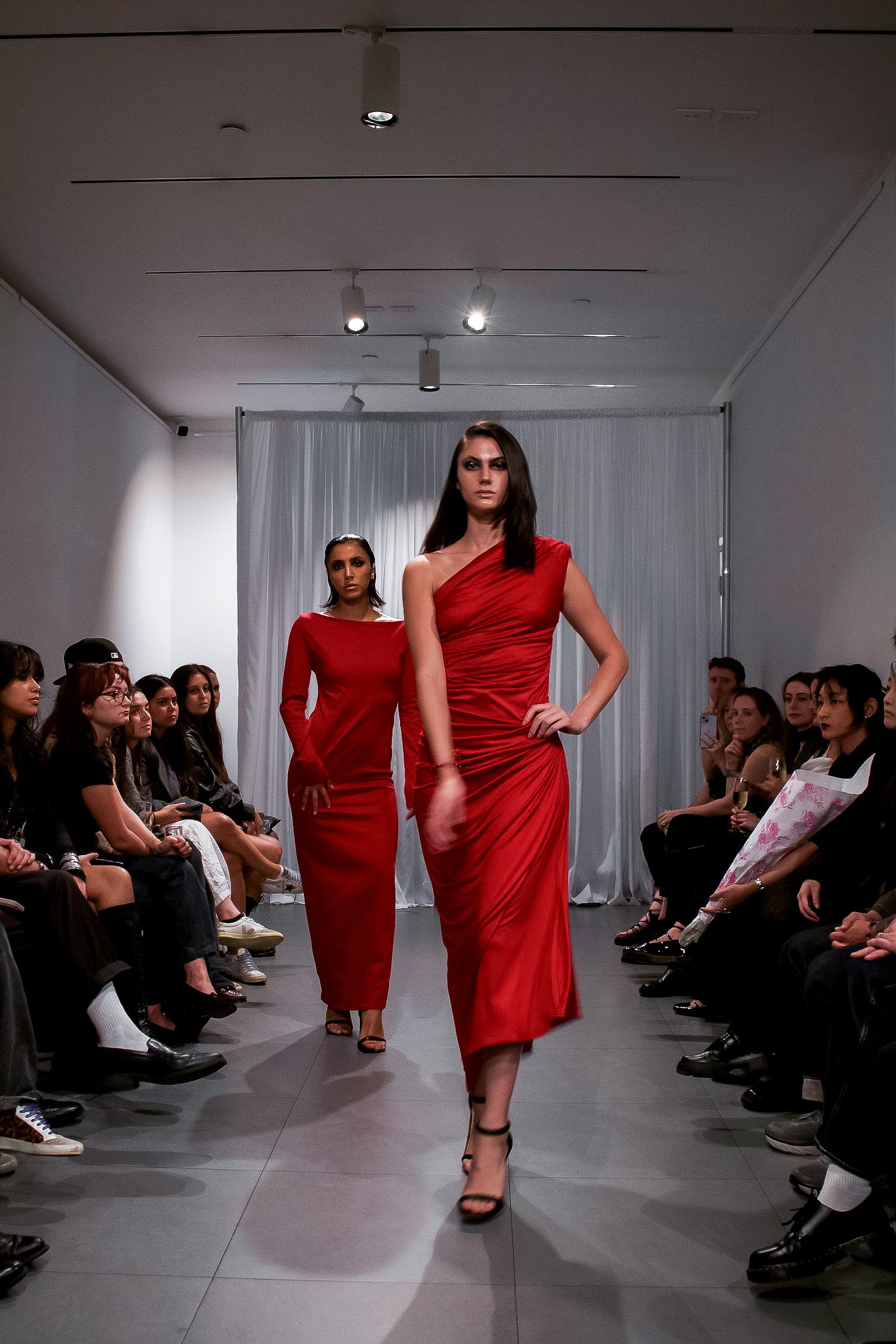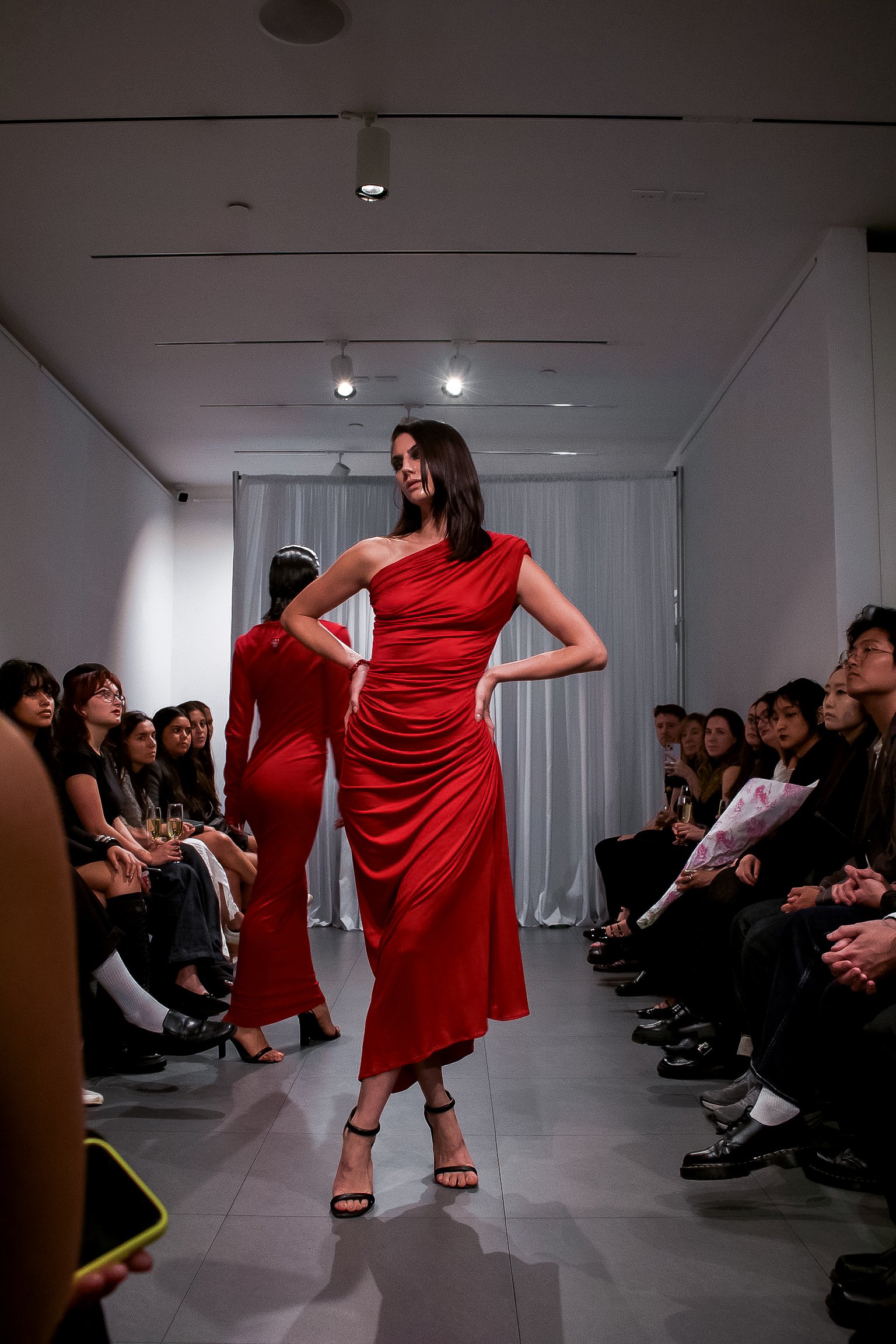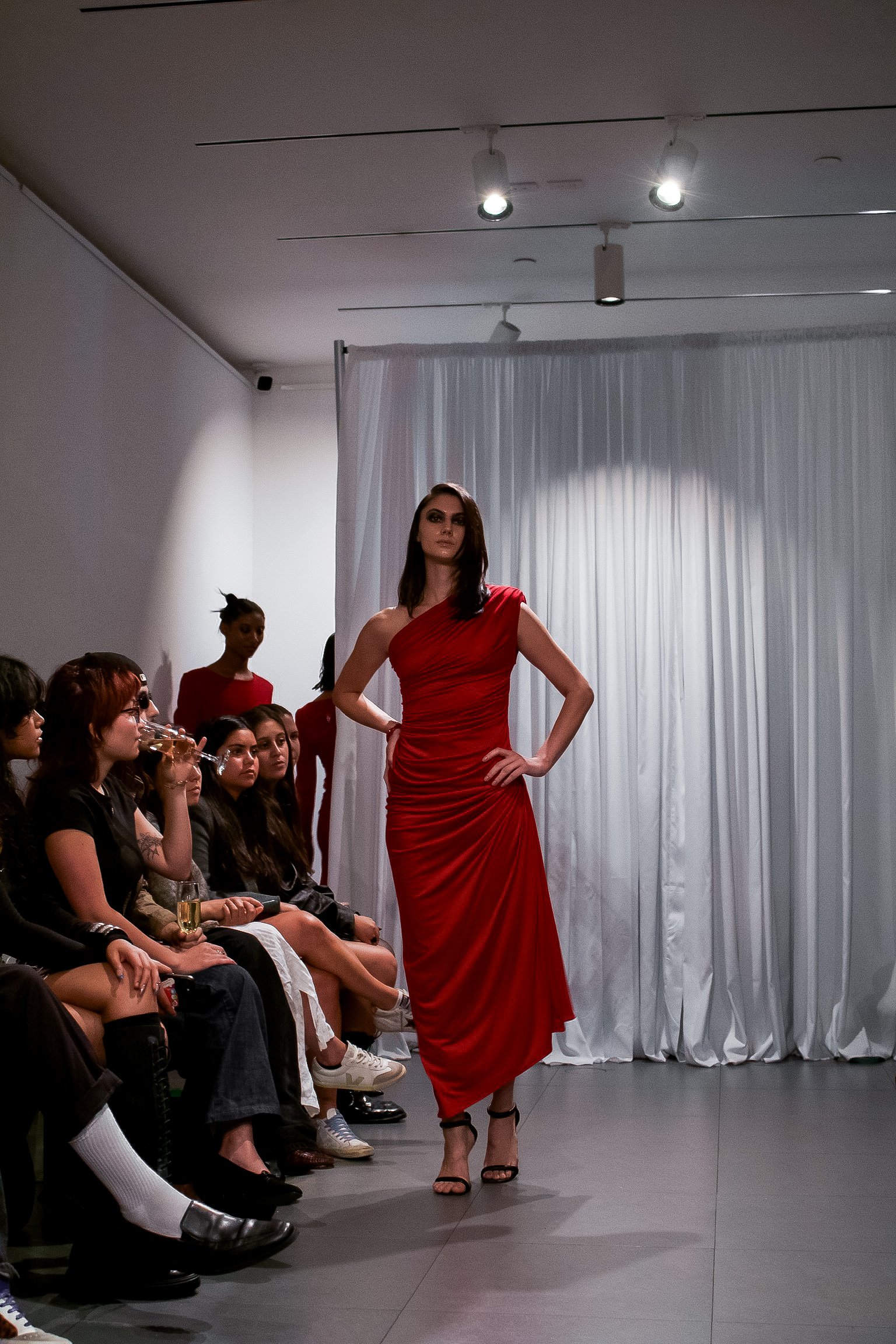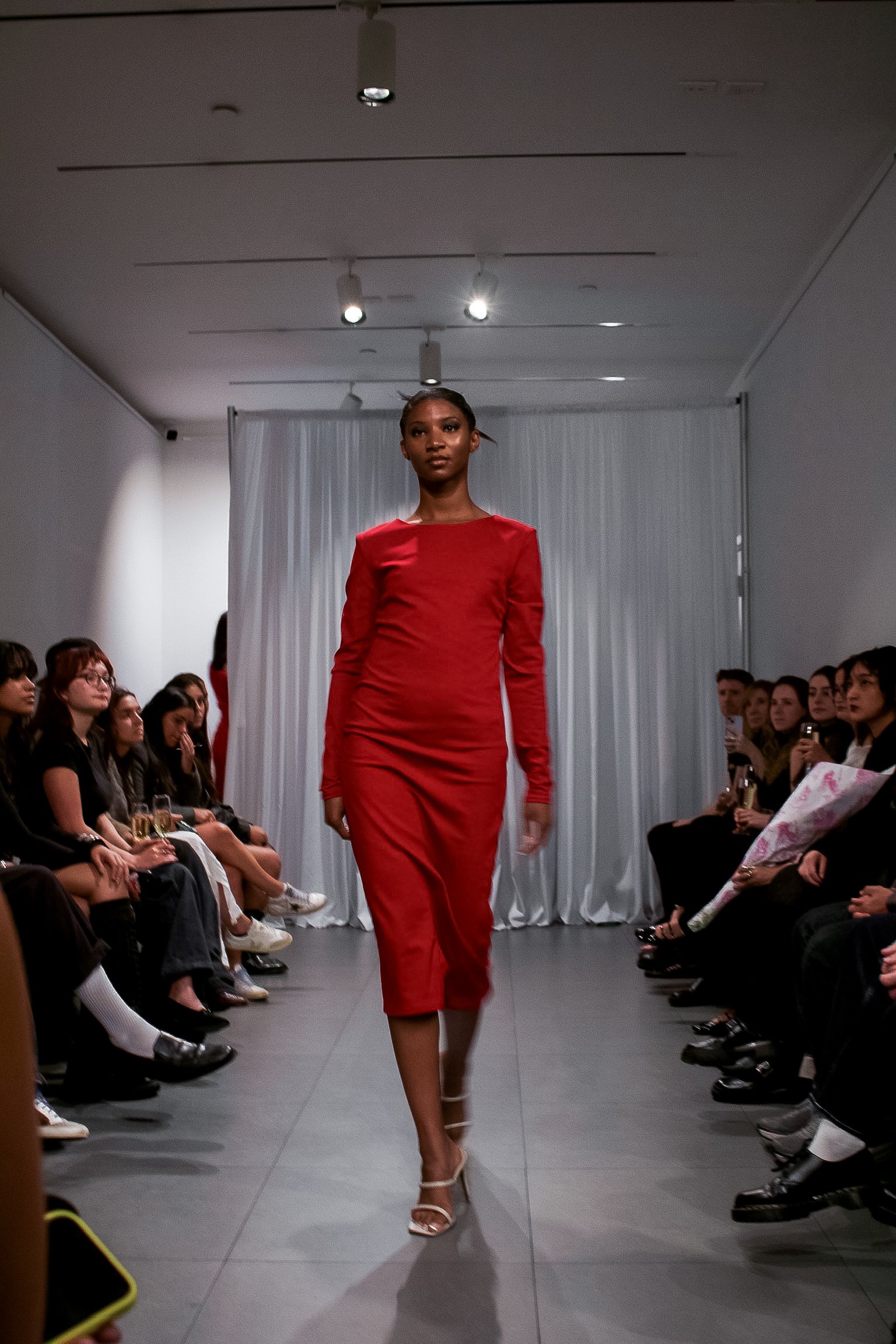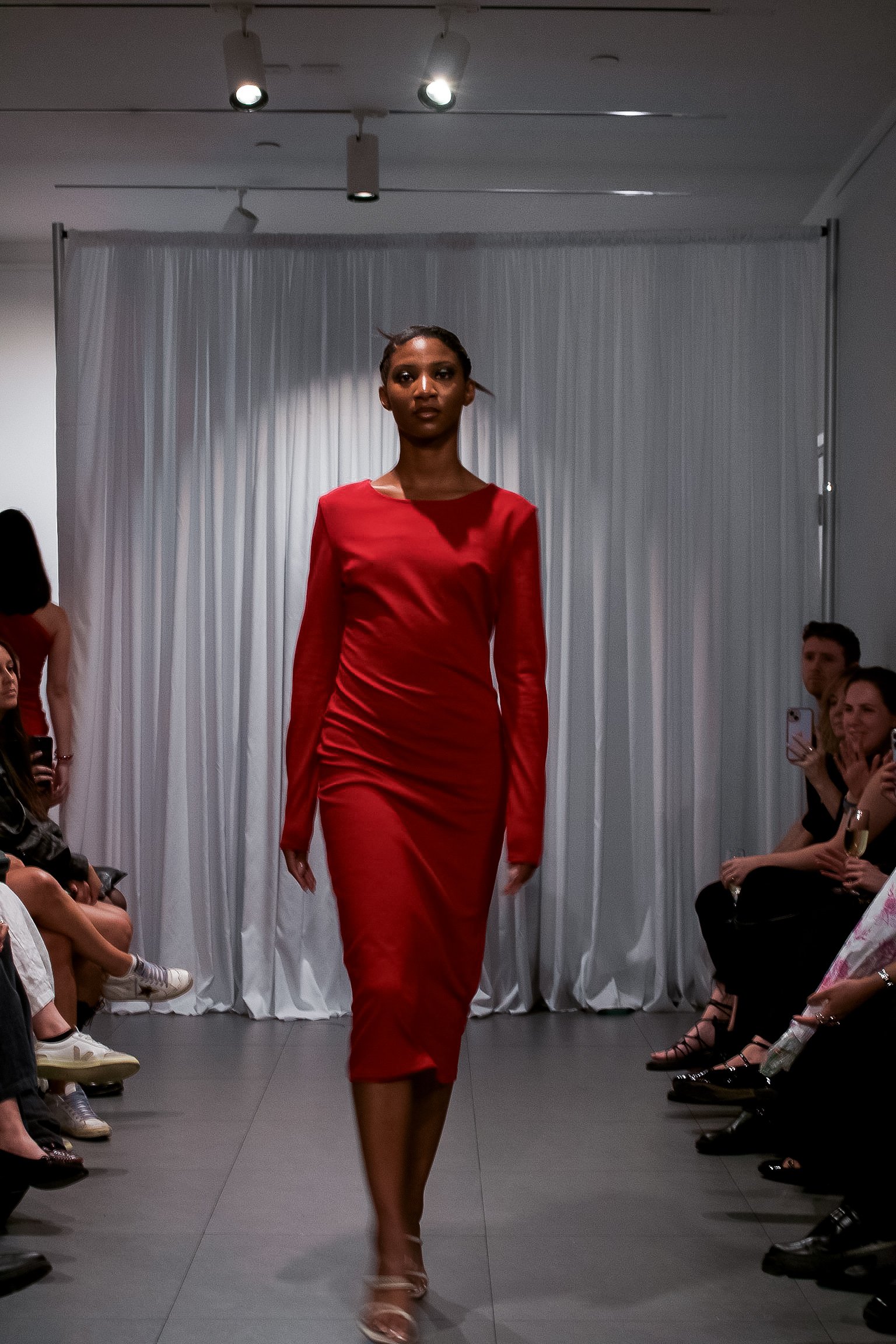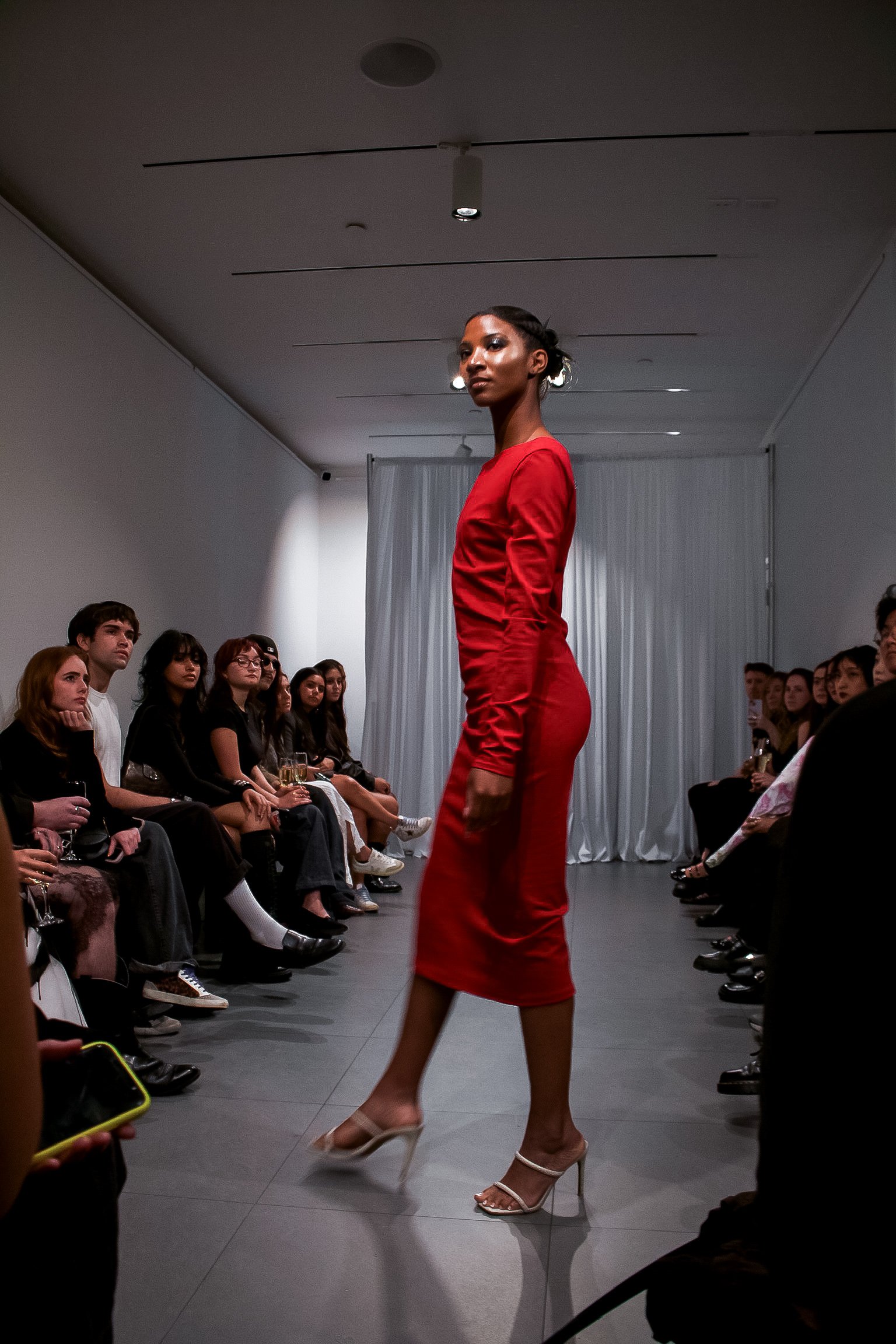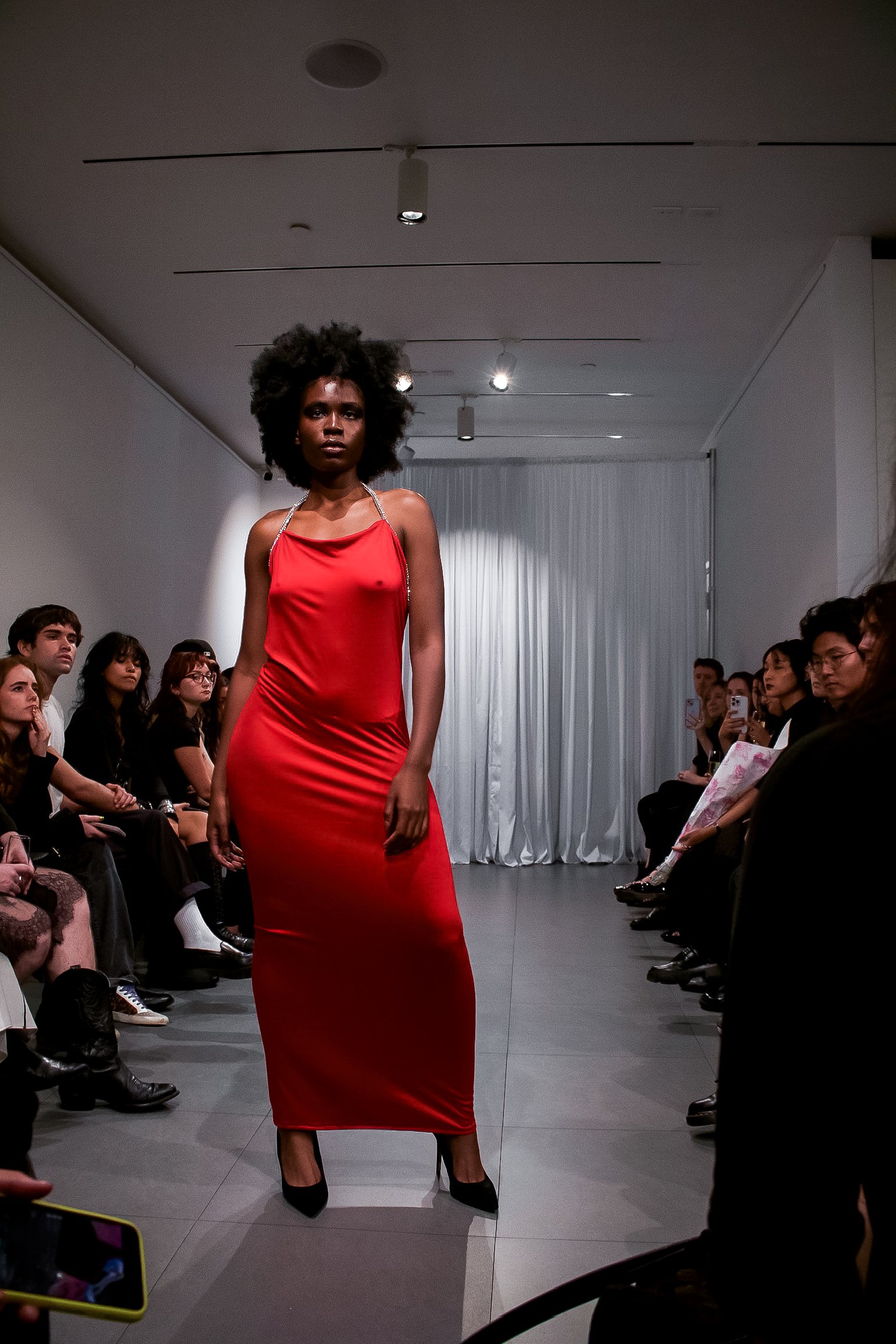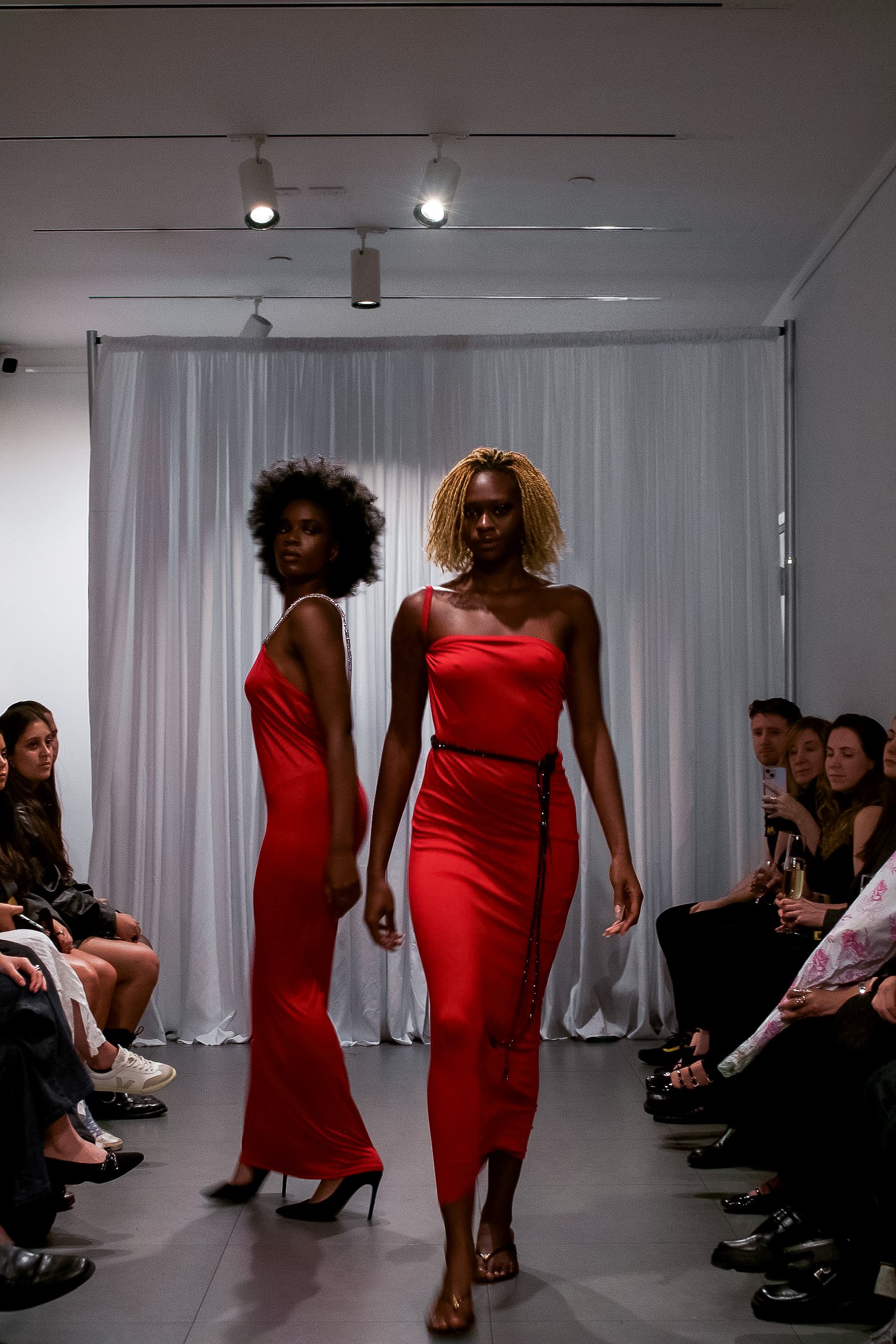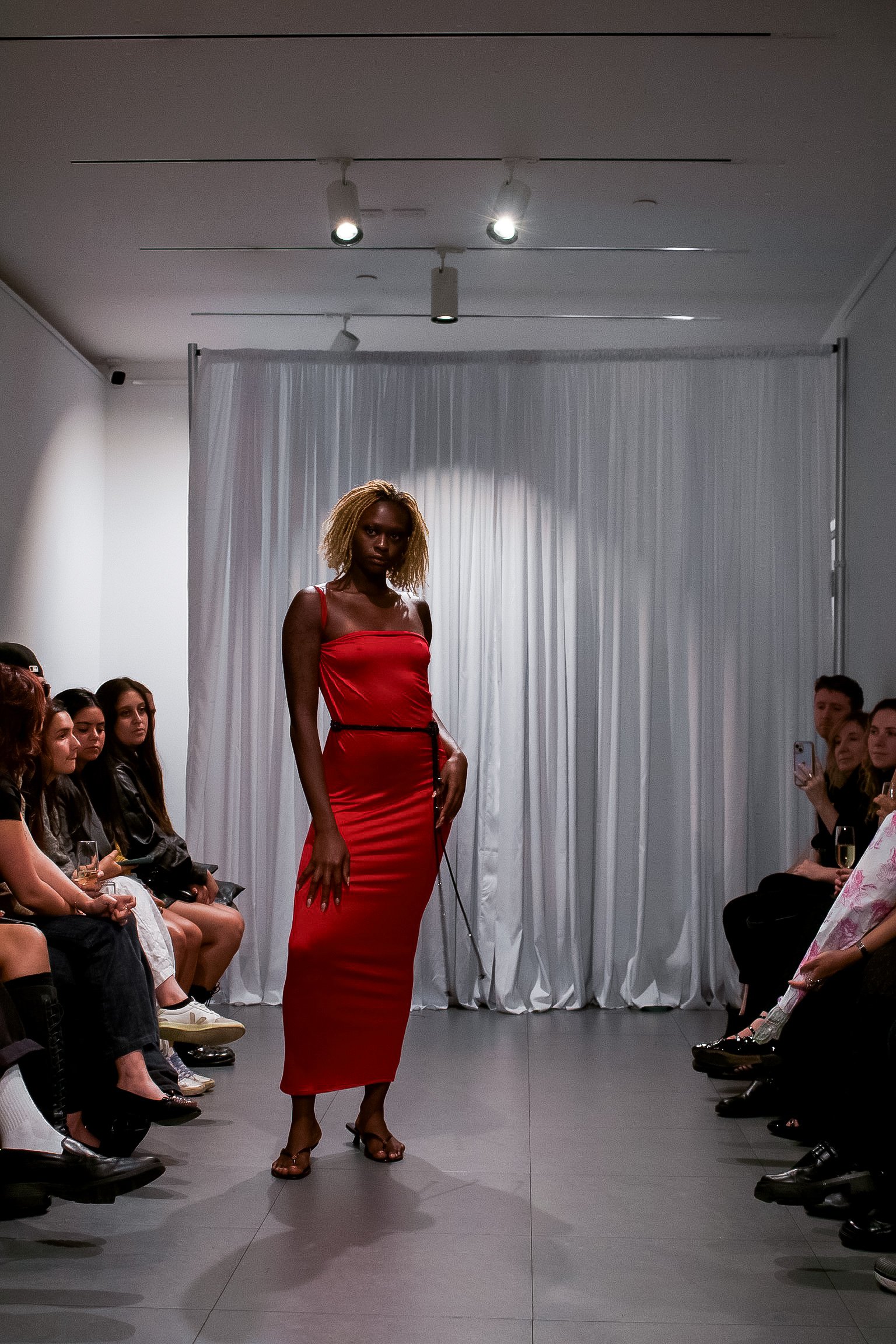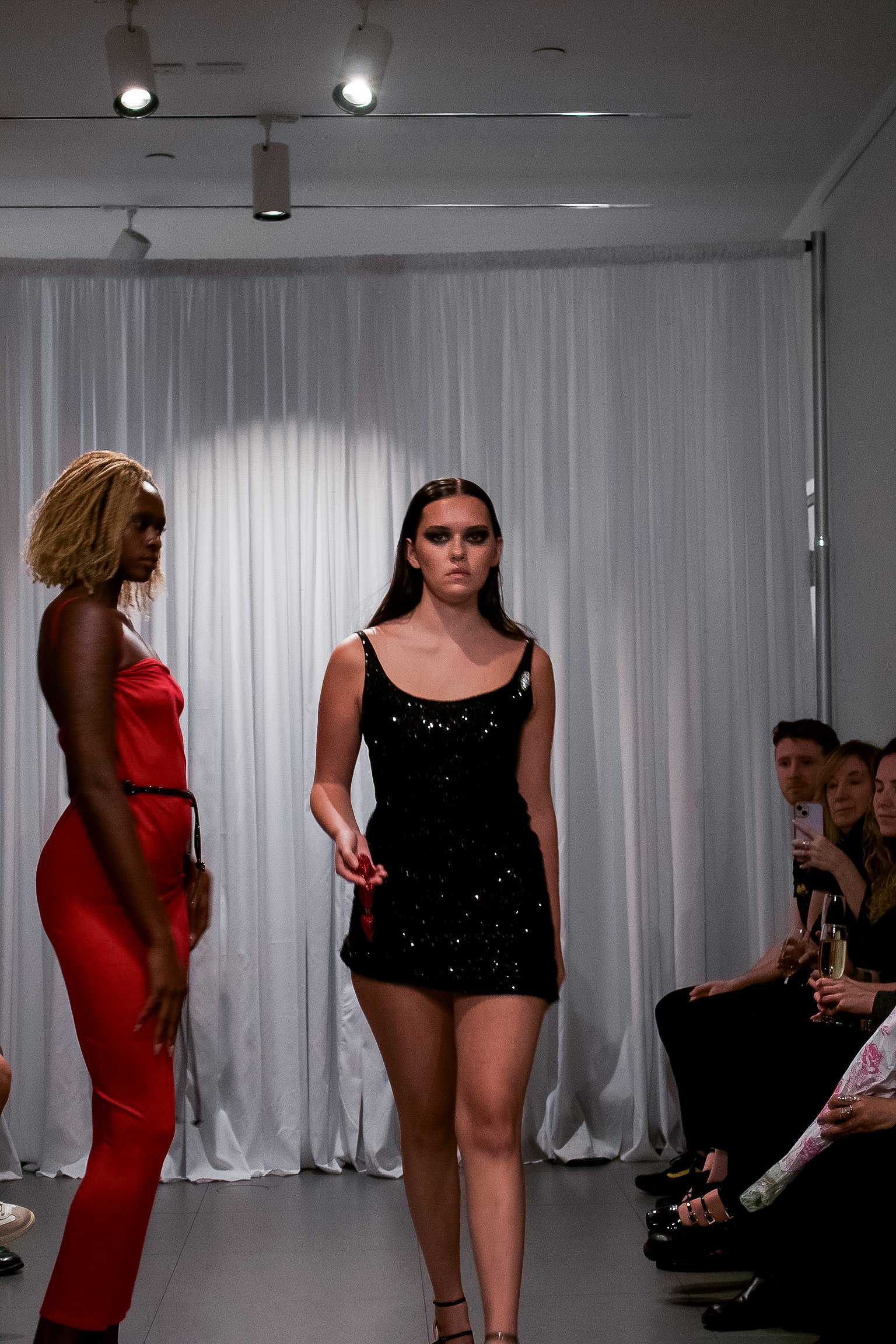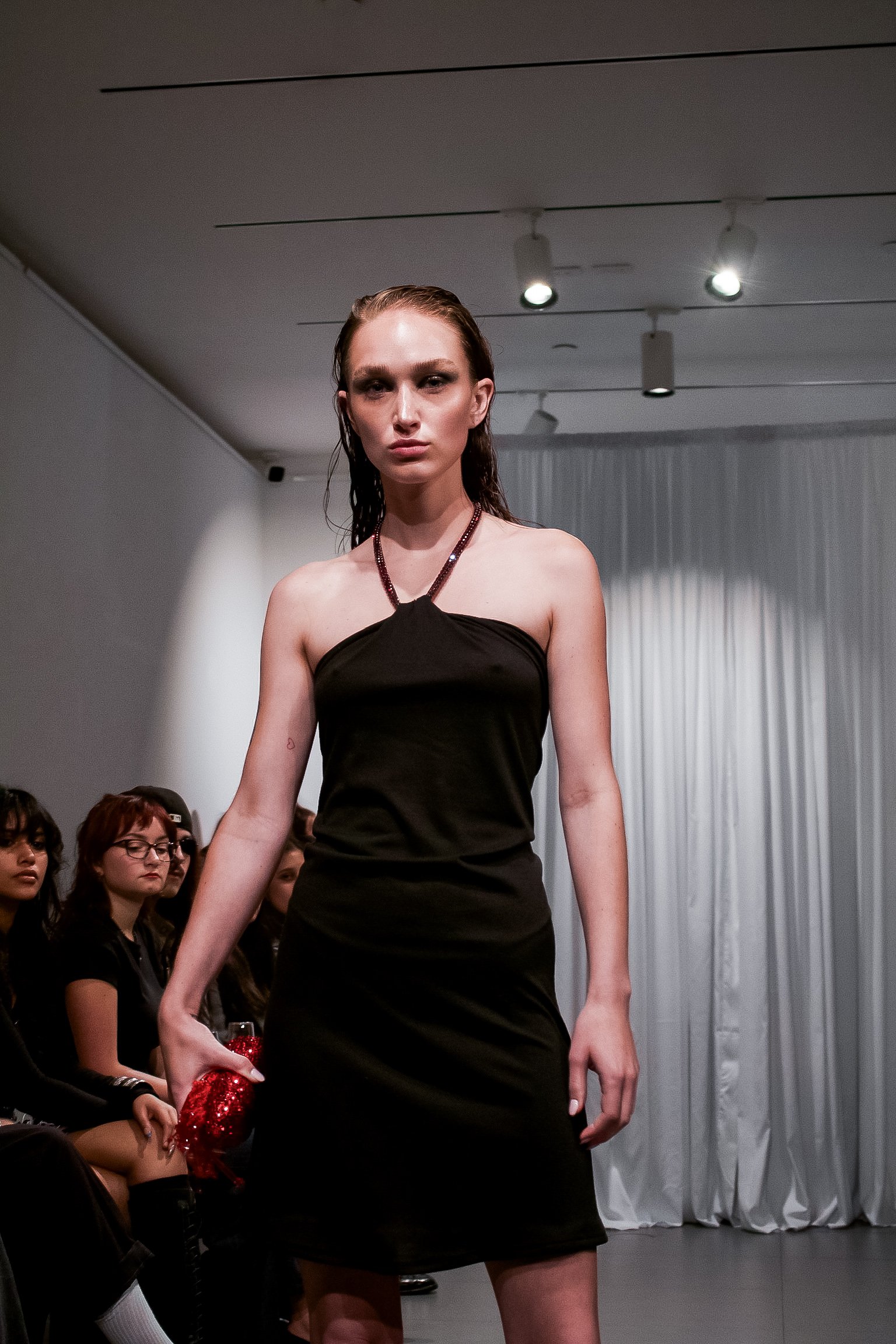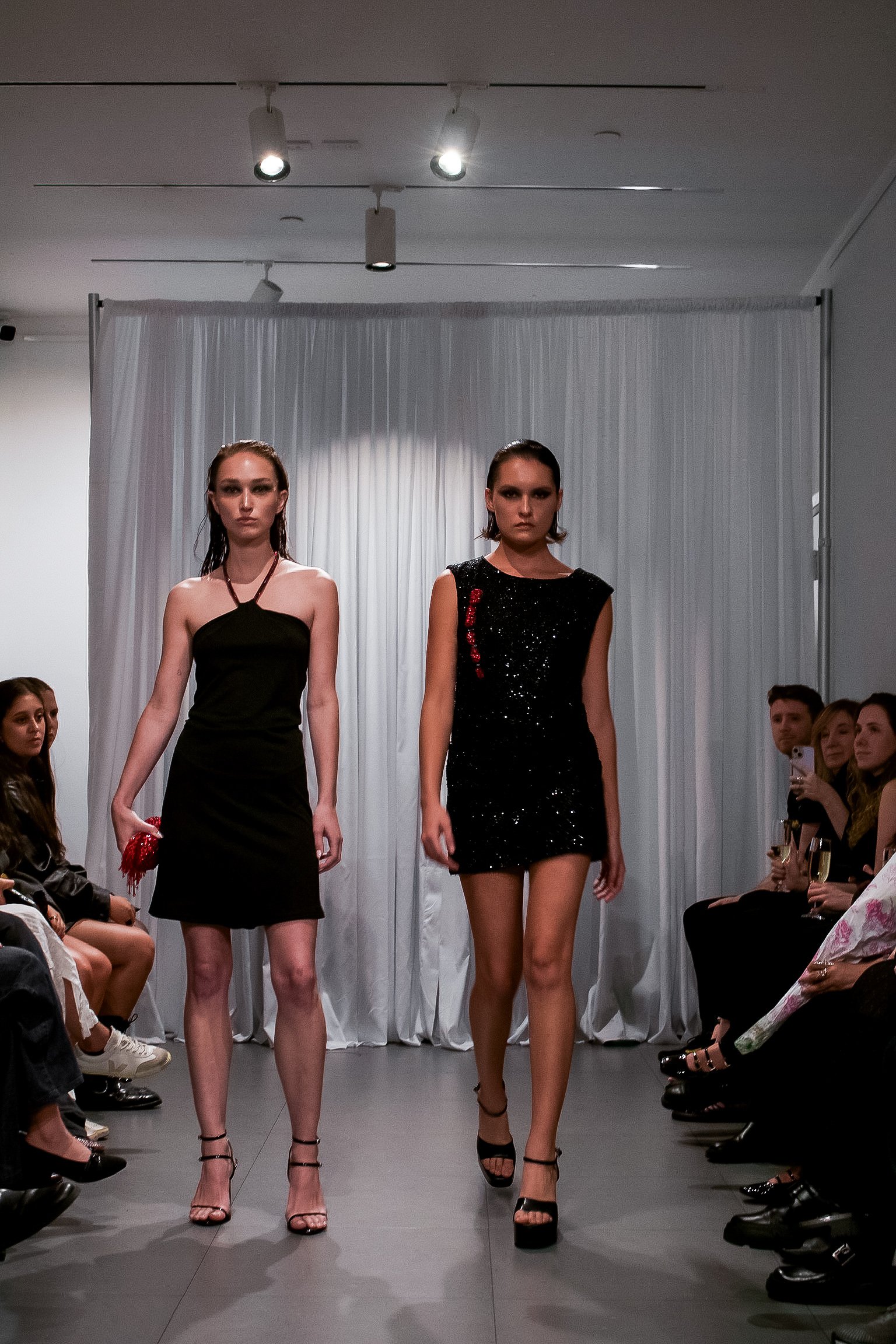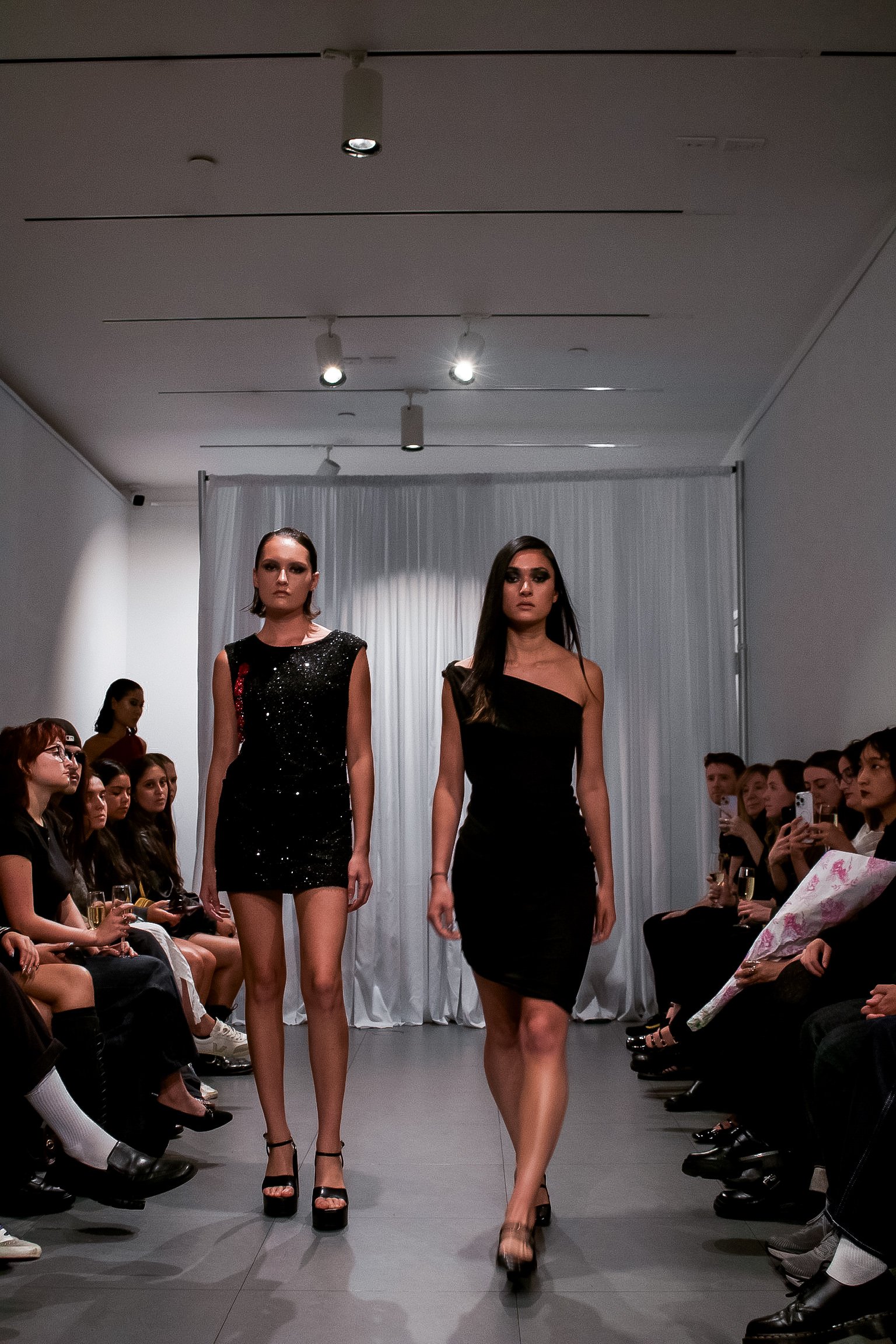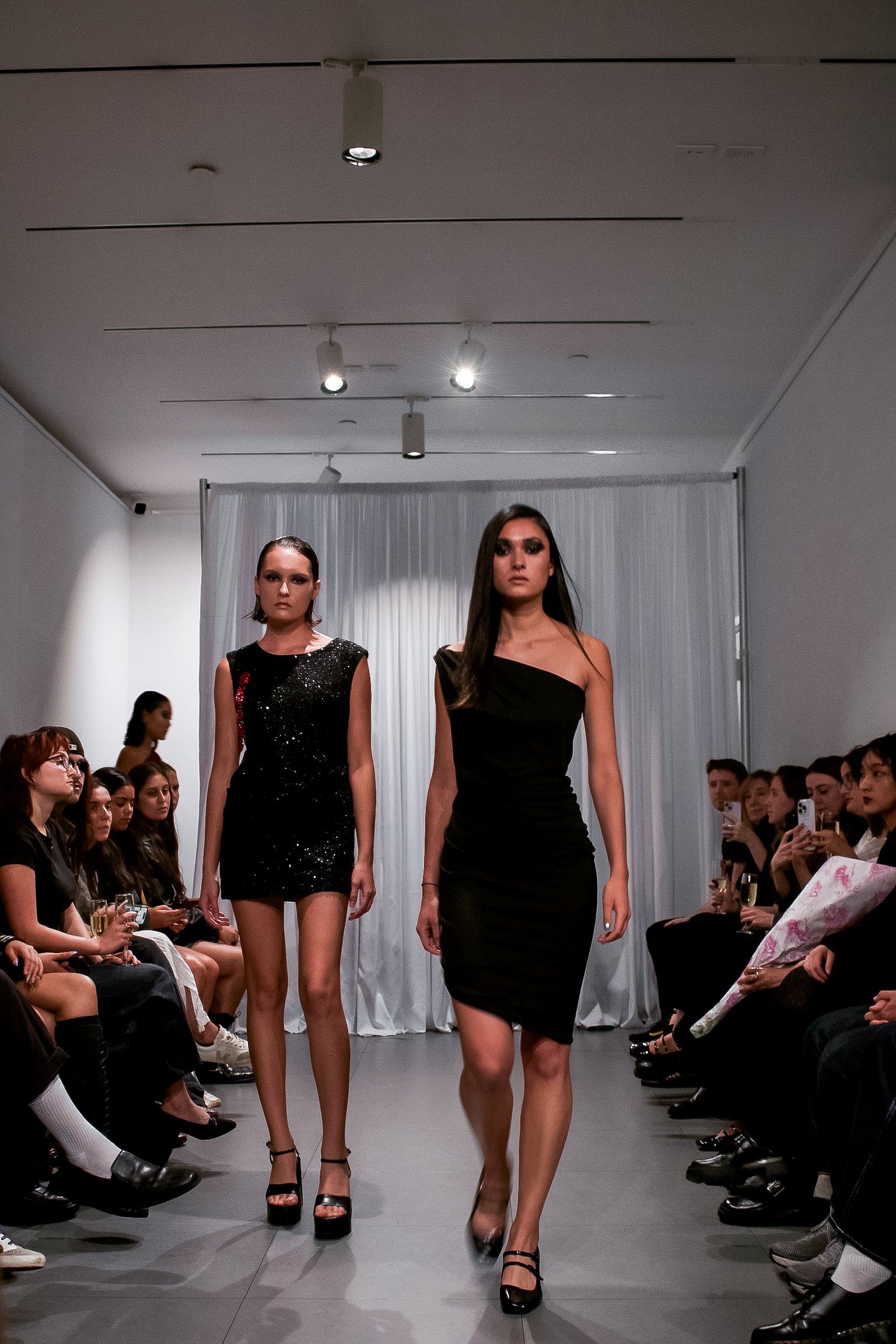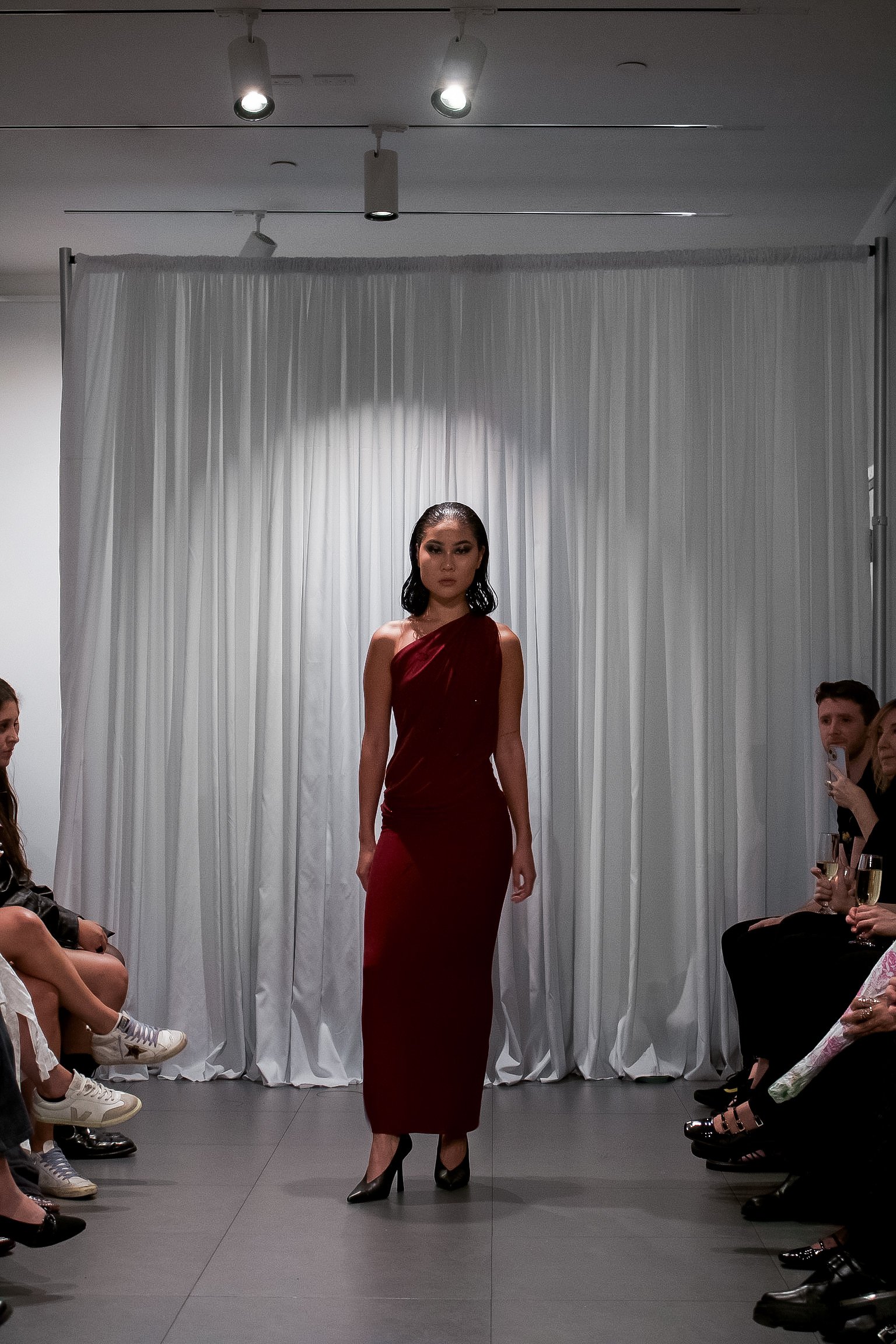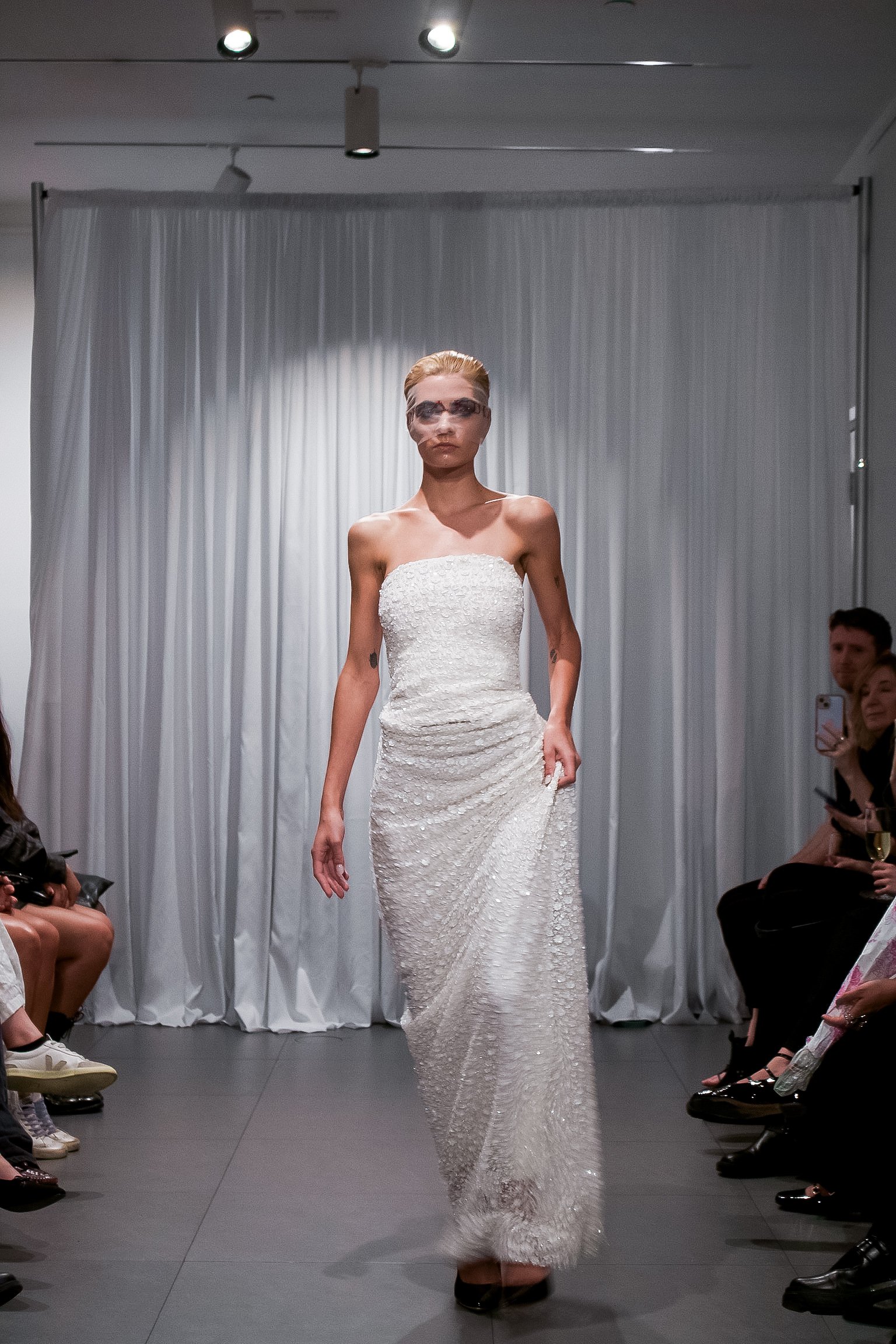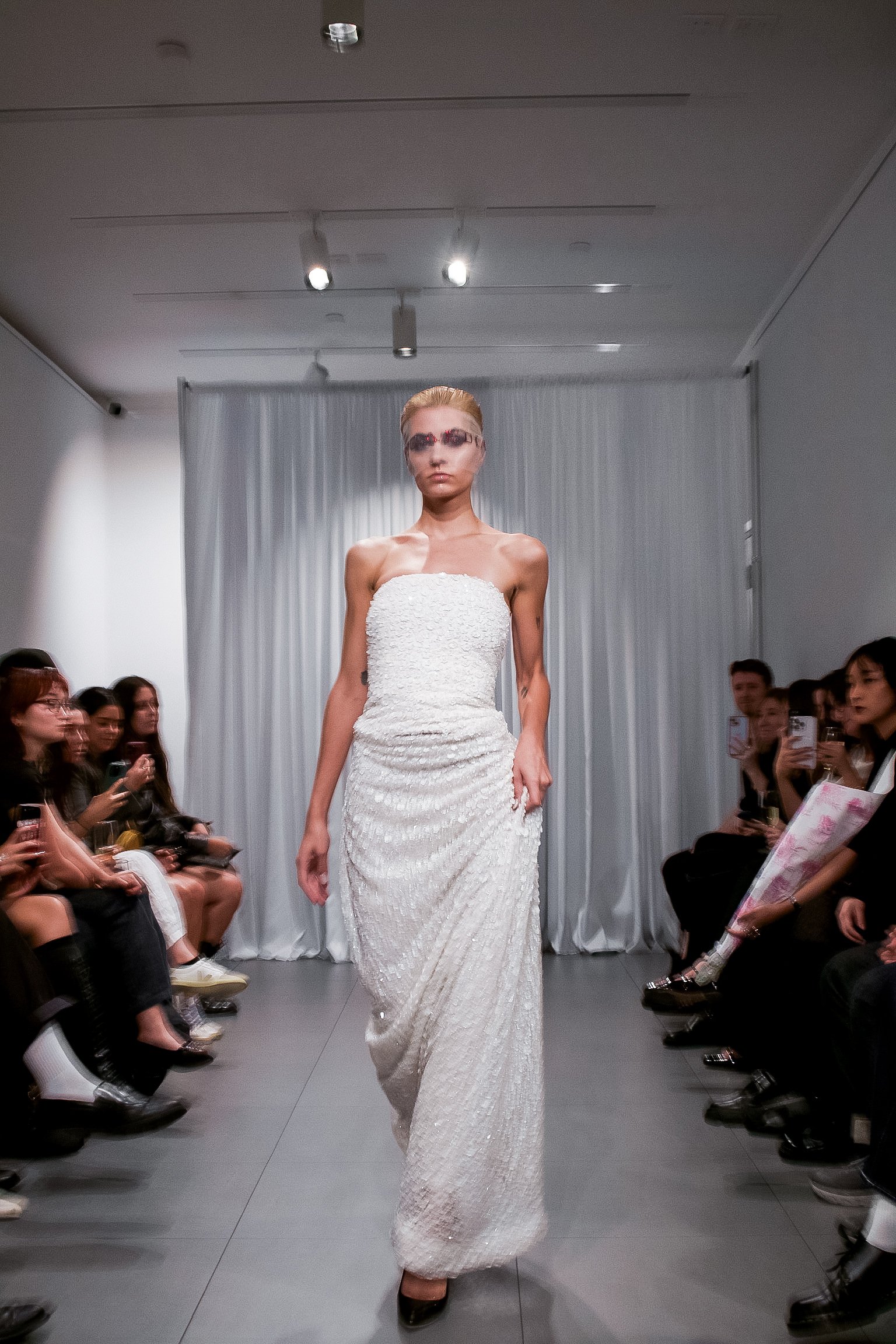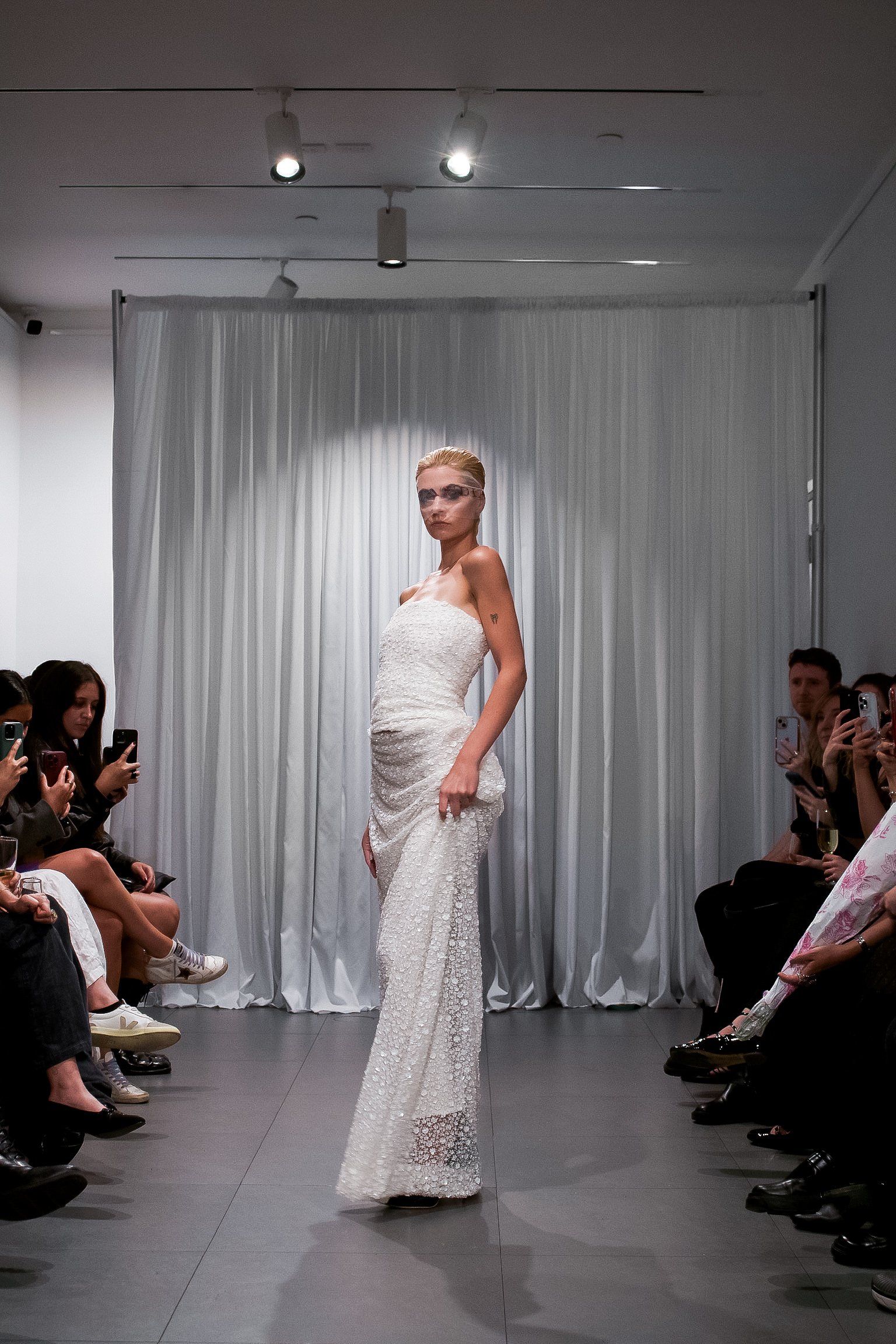CICAEDIA Spring / Summer 2025: The Great Red Dragon.
It didn’t start with clothing. It started with a film, or more specifically, how that film looked.
Michael Mann’s Manhunter (1986) became something I kept returning to while building this collection. Not because I loved it, I didn’t. It’s slow, sometimes bad, but the cinematography was perfect. Those sterile white rooms, the stillness before violence, the silence that felt like pressure. The visuals became more important than the story.
Reading the synopsis and then the book gave me a clearer sense of the psychology, of what the film was trying to do, and where I was mentally at the time. I related less to the thriller and more to the feeling of being highly functional, precise, and quietly unwell. The character of Will Graham, detached but sensitive to the point of sickness, mirrored something I recognized in myself. That state became the foundation of The Great Red Dragon.
From there came again her, the CICAEDIA woman.
Here, she’s not a killer, not a victim, but someone who has simply started to live inside her own mind too much. A woman with taste, with history, but restraint, who manages to mistake her psych ward for a luxury hotel. She dresses for breakfast, for appointments, for the dining room. Each outfit a uniform of composure: sterile, clinical, but quietly excessive. She’s not delusional; she’s refined. Eccentric. Just detached enough to survive herself.
The show opened with a deliberately unsettling piece of theatre. For nearly two minutes, the voice of the films ‘Tooth Fairy’, played over the speakers, ordering Freddie Lounds to read aloud the monologue about the Great Red Dragon, the same chilling speech from the film’s infamous kidnapping sequence; now out of context. Underneath it played “The Rendezvous,” a track from Alexandre Desplat’s Birth (2004) soundtrack, a score that had been haunting me for months and became a recurring motif throughout the rest of the show. The effect was immediate: the environment remained clean, white, clinical, but the audio made it feel psychotic, bloody, and deeply melancholic, even disturbed.
The spoken section cut out suddenly, replaced by the opening of “Digital Bath” by Deftones, a band that has shaped much of my creative language and one I consider among the greatest sex rock bands ever made. Their presence in the soundtrack wasn’t just a musical choice, but an emotional one. “Digital Bath” along with the other chosen tracks are seductive, violent, and romantic all at once, and it became the heartbeat beneath the collection. That tonal collision, sterile visuals against chaotic sound with manic subtext; it set the stage for everything that followed.
The collection builds around this world. It begins in grey, streamlined, sterile, casual. Oversized hoodies, T shirts, and long sleeves with the rhinestone grey CICAEDIA logo, paired with structured mini and maxi skirts. The skirts are jersey faced and stiffened to hold an angular, controlled shape. The tone is consistent, almost medical.
In the white section, the clothes loosen slightly. Draped swimwear and jersey layers can be tied or reversed, paired with spandex and cotton underwear meant to feel both private and performative. The details are bone, ribs and vertebrae rendered in crystal, colored from silver to deep bloody red. The crystal pieces are hand-sculpted, and are covered in 4 unique color-ways of Swarovski stones. From blood red to an occasional magenta and ox-blood , it was meant to feel like coagulated blood.
Red shifts the tone again. Looser jerseys hang from silver zirconia necklaces, while heavier ones are built into sculpted, full coverage dresses with hidden bone fragments inside, marked with the symbol of the dragon. Then black: jersey trimmed with metal ring crystals, sequined minis with spine detailing, and a maroon gown with rhinestone lettering spelling CICAEDIA.
The wedding look ends it, a final gesture that feels both ceremonial and quietly unhinged. At first glance, it reads as tradition: a silk satin corset base, structured and severe, overlaid with an absurdly heavy, hand beaded tulle layer scattered with miniature flowers and glass beads. Beneath it all sits a soft cotton jersey underlayer. A subtle drape runs through the skirt, its weight shifting gently as she walks, and I had the model carry one side in her hand, gathering it. But the illusion of convention ends there. Where a bustle should sit, the garment is cut away entirely, as though she herself had taken a blade to it in an heated act. What’s revealed isn’t rebellion, it’s relief. She’s grown tired of the weight of expectation and sliced it off, exposing something raw and unguarded beneath the performance. The gesture is playfully sexy, as it exposes her bare ass, but it’s deliberate; a controlled undoing, a sigh after the storm.
As she walks, the Birth soundtrack returns, “Prologue (Birth)” unfurling through the space, layered with church bells I’d lifted from a 2012 wedding video filmed in Italy and the faintest sound of birdsong. She crosses the runway slowly, deliberately, before disappearing backstage. The soundscape unravels with her exit, the bells fading into silence, the birdsong cutting out one by one, until there is only breath, and then nothing. In that stillness, the intro to Deftones’ cover of “Drive” by The Cars begins, a song that has always felt to me like the most romantically haunting thing ever recorded: melancholic in a way that feels alive, suspended between tenderness and grief. One by one, the rest of the looks return in order, white, red, black, before she emerges again in the wedding gown, closing the show as “Drive” blooms into its full, aching swell. Her final walk is slow and deliberate, a moment of grace coddled from broken internal monologues, a quiet beauty pieced together from something deeply fractured. The show doesn’t end with an exclamation but with a breath, one that feels almost like release.
The Great Red Dragon isn’t about violence or madness. It’s about attempting restraint. About a woman holding herself together so elegantly that you don’t notice she’s falling apart, until the moment she snaps. It’s about how beauty can survive within collapse, and how control can still look immaculate even when it’s no longer working.
Everything clean, composed, and completely utterly unwell.
Show-Notes Written by Yitzhak Rosenberg
Designed & Styled by Yitzhak Rosenberg
Runway Production, & Set Design by Ryan Scheriff
Casting done In-House
Hair & Makeup by Joey DeVirgilio
Runway Photography by Paulie Debus
Campaign shot by Nick Brito
Assisted by Jade Palmiotti
With Hair & Makeup by Joey DeVirgilio and Lauren Wolborsky
